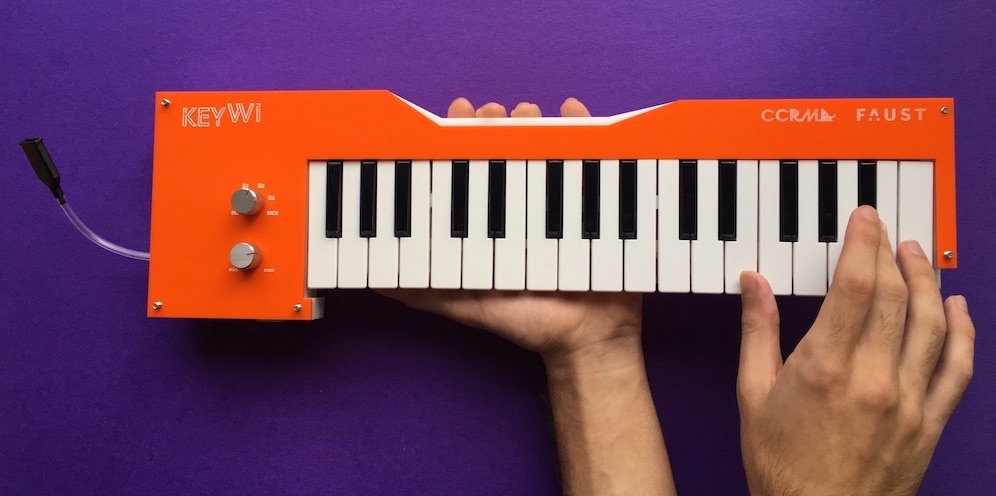Interactive Music
The blog posts of this section relate to the course MCT4054 Interactive Music Systems (2022 onwards) and to the discontinued course MCT4045 Interactive Music Systems (2019 to 2021). The aim of these courses is to develop knowledge of and practical experience with the design and implementation of systems intended for real-time sonic or musical interaction. This could be in the form of a performance-oriented musical instrument, or in various types of interactive sonic systems that explore collaborative physical, or virtual music-making. This section also includes posts from the Physical Computing and Human-Computer Interaction modules of the discontinued course MCT4000 Introduction to Music, Communication and Technology (from 2018 to 2020).
-
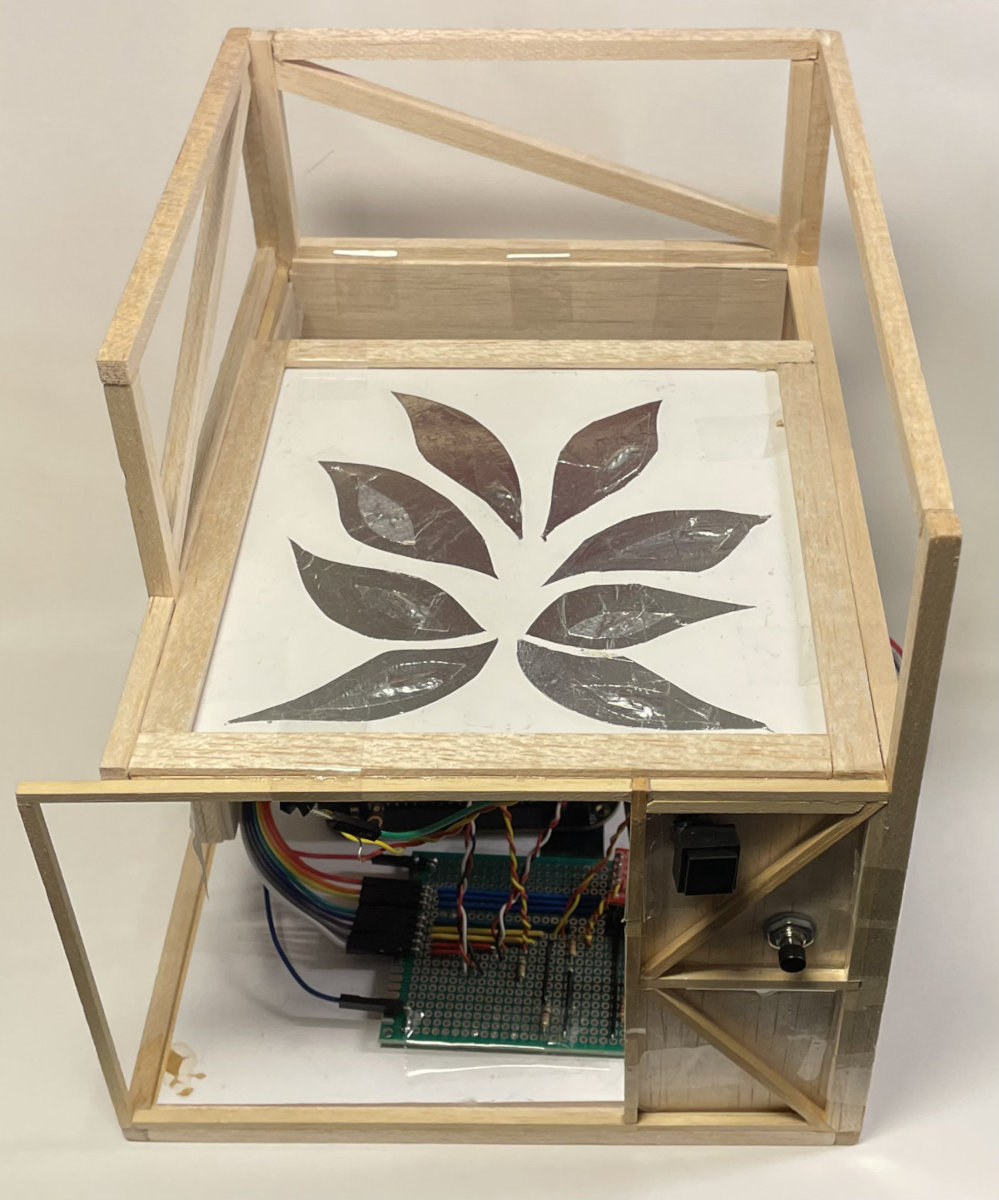
The Puzzler: A Tectonic Interactive Music System
An IMS inspired by lessons in architecture
-
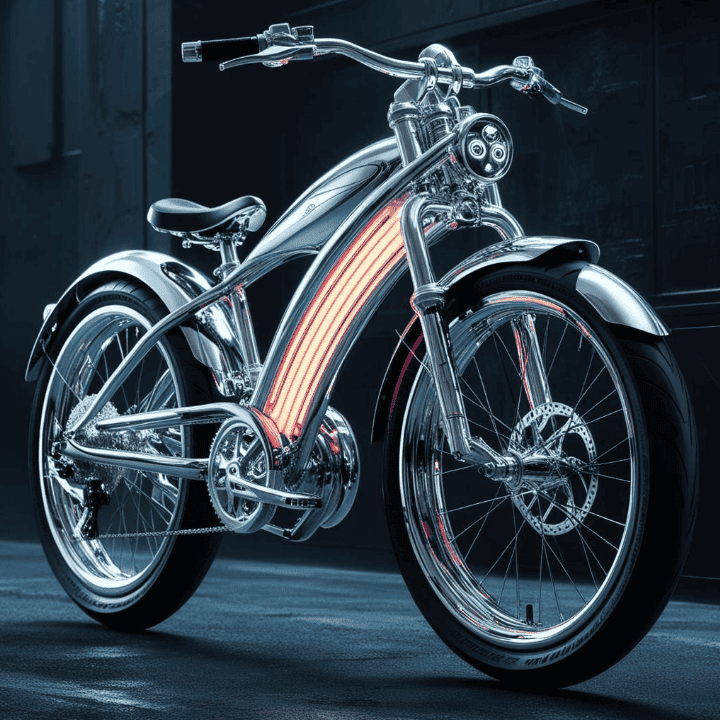
TechnoBike
A pedal-powered interactive music system
-
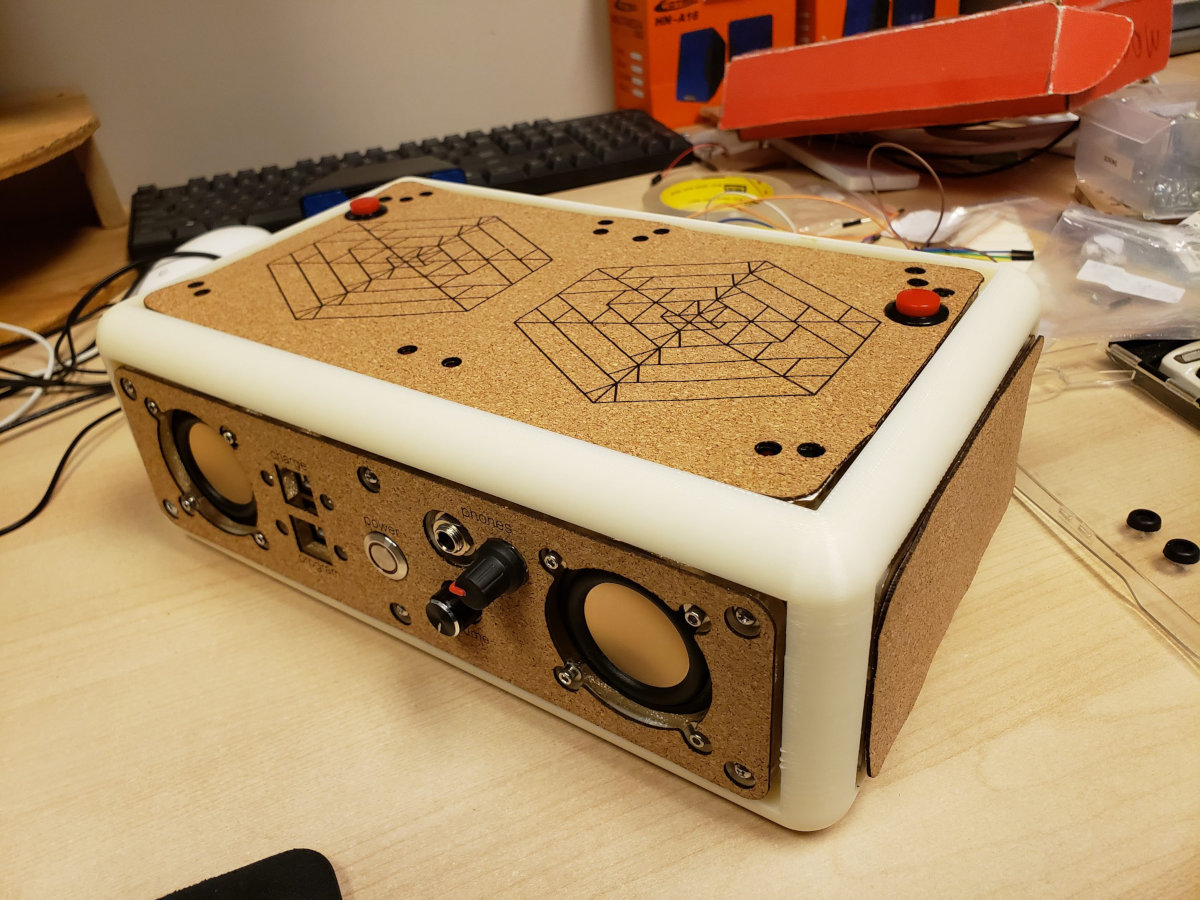
The SlapBox: A DMI designed to last
A critical review of a durable digital musical instrument
-
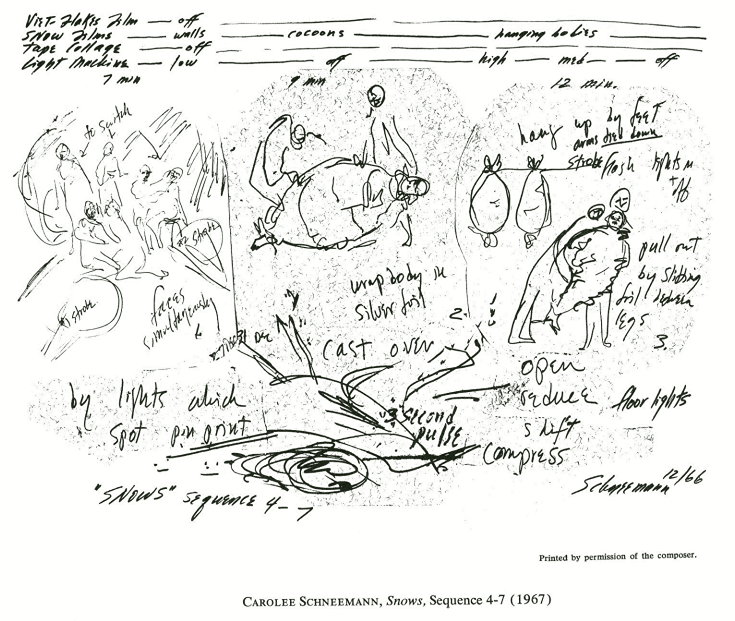
Review of Sounding Brush: a graphic score IMS?
A critical review of a drawing-based interactive music system
-

Xyborg 2.0: A Data Glove-based Synthesizer
Learn about my adventures in designing and playing a wearable instrument.
-
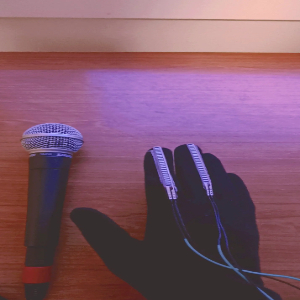
Voice/Bend
Microphone Gestural controller
-
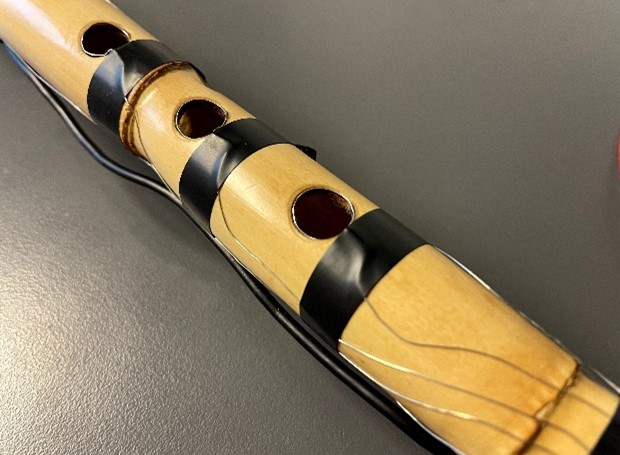
The Hyper-Ney
Electrizing an ancient flute using capacitive and motion sensors
-
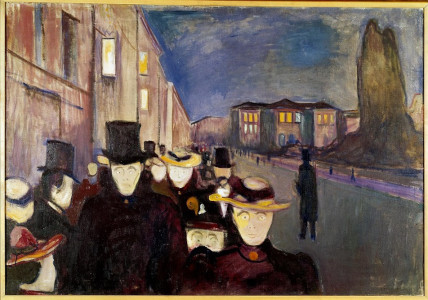
An Interactive Evening on Karl Johans Gate
What if everyday objects decide to kick it up a notch and embrace a life of their own?
-
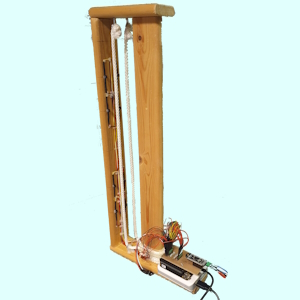
CordChord - controlling a digital string instrument with distance sensing and machine learning
How can we use sensors to control a digital string instrument? Here's one idea.
-

The Paperback Singer
An interactive granular audio book
-

Touch/Tap/Blow - Exploring Intimate Control for Musical Expression
Touch/Tap/Blow is, as its name suggests, an interactive music system which aims to combine three forms of intimate control over a digital musical instrument. Notes and chords can be played via the touch interface while bass accompaniment can be driven by the player’s foot tapping. Below are the details of it’s main elements.
-

The Saxelerophone: Demonstrating gestural virtuosity
A hyper-instrument tracking data from a 3-axis accelerometer and a contact microphone to create new interactive sounds for the saxophone.
-

A Critical Look at Cléo Palacio-Quintin’s Hyper-Flute
A Boehm flute enhanced with sensors
-
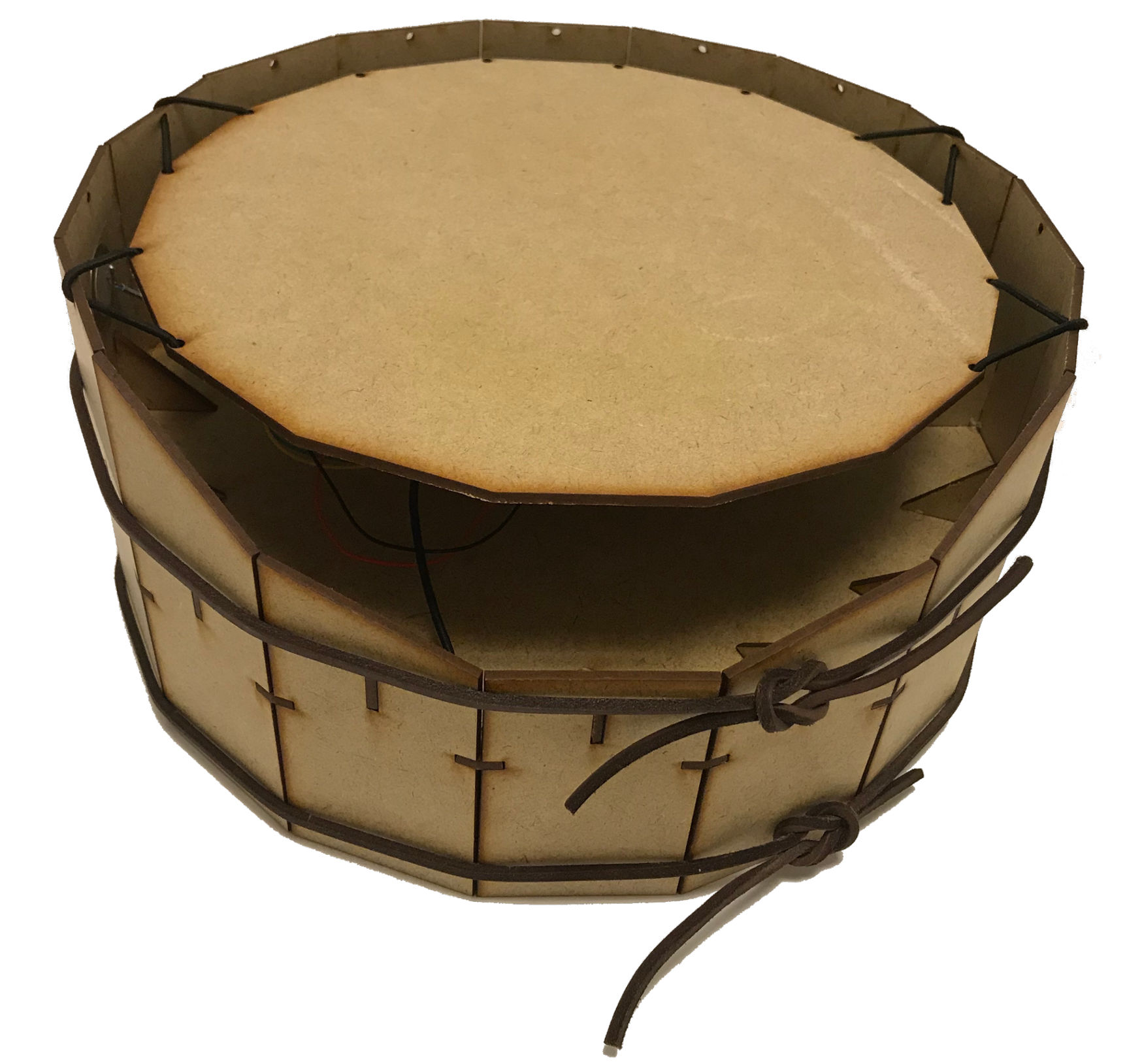
The Daïs: Critical Review of a Haptically Enabled NIME
Is this a violin?
-

Shadows As Sounds
4-step sequencer using seeds and corns
-

The Augmented Violin: Examining Musical Expression in a Bow-Controlled Hyper-Instrument
A brief look at the affordance for musical expression in a violin-based interactive music system.
-
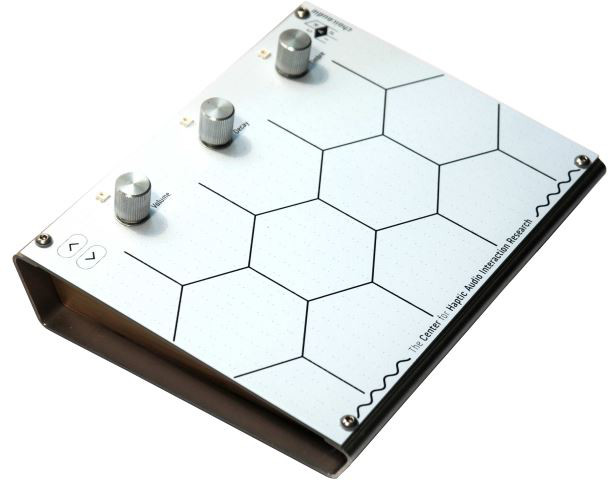
The Tickle Tactile Controller - Review
Like many digital instruments I have come across, the instrument design takes its initial inspiration from the piano, a fixed-key instrument.
-
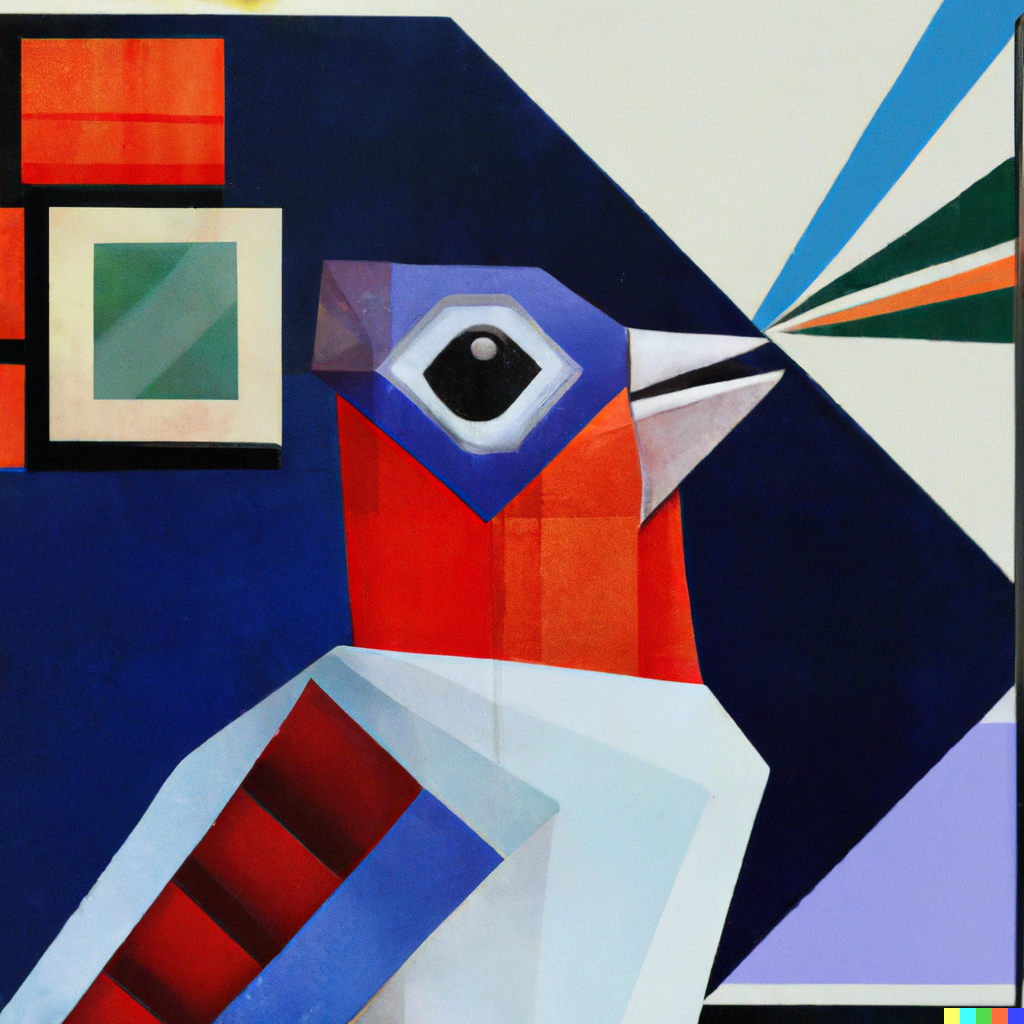
Review of On Board Call: A Gestural Wildlife Imitation Machine
Critical Review of On Board Call: A Gestural Wildlife Imitation Machine
-
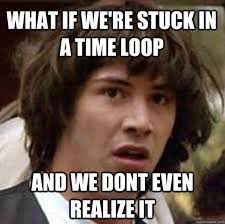
How to break out of the comping loop?
A critical review of the Reflexive Looper.
-
Exploring Breath-based DMIs: A Review of the KeyWI
The relationship between musician and instrument can be an extremely personal and intimate one
-
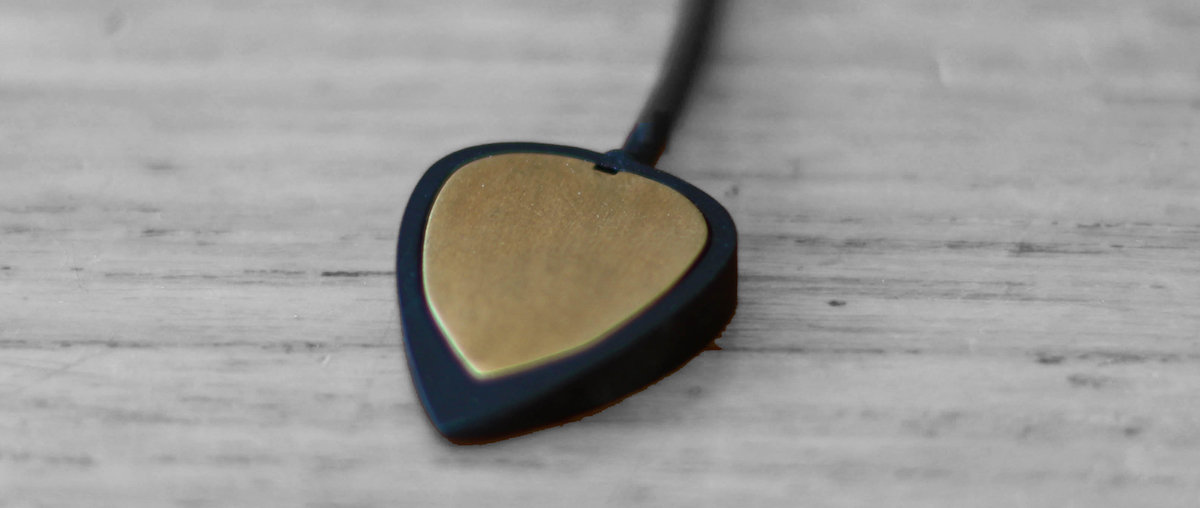
Controling Guitar Signals Using a Pick?
A deeper dive into the Magpick
-

Towards a Claptrap-Speaking Kastle Maus
Once upon a time, there was a maus living in a kastle..
-

Expressive Voice: an IMS for singing
Take a peak at my IMS and the reasoning behind its design.
-
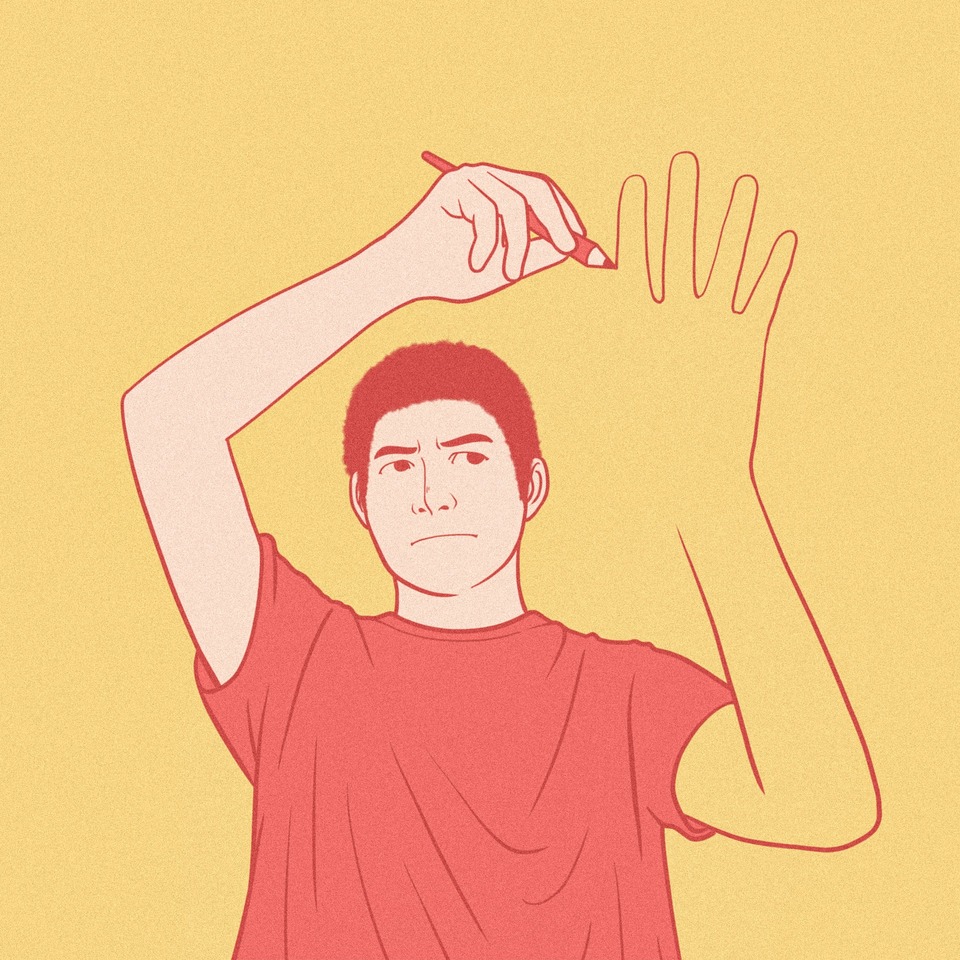
Interactive Music Systems, Communication and Emotion
Talking about IMSs, expressing and even inducing emotions.
-
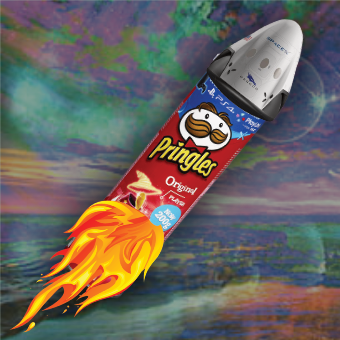
Pringles, I love You (not)
No, that is not true. I do not like Pringles. But I like the tube it comes with! That’s why I invited a friend over to eat the chips, so I could use the tube for my 4054 Interactive Music Systems project.
-
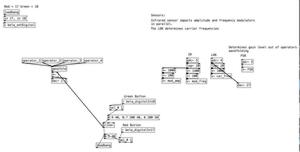
Three Takeaways as a musicologist
Recounting the experience of making an instrument from scratch for the first time.
-
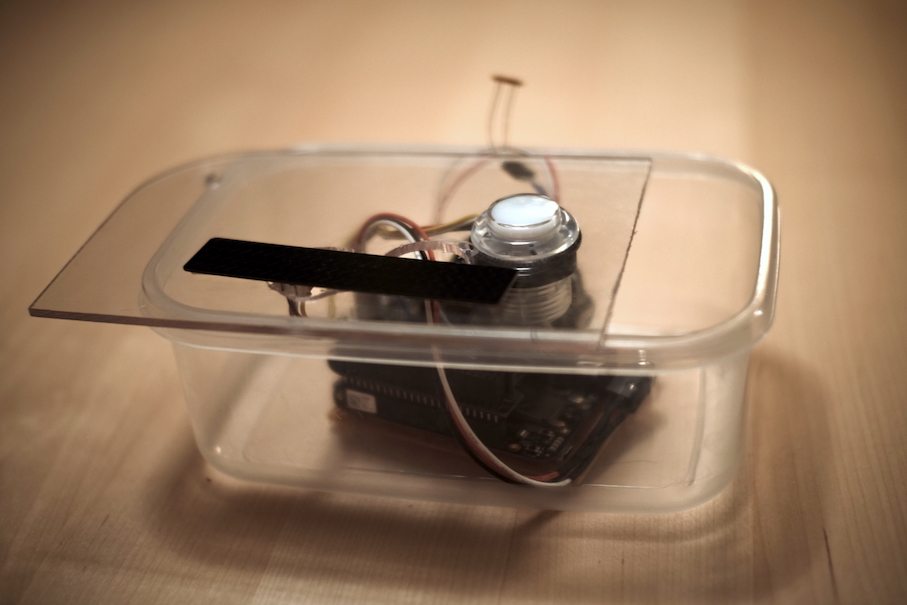
SR-01
The climate aware synthesizer. Based on using few components while reacting to changes in light and temperature around it, causing it to sound different today than in a changed climate.
-

How to make your screen time a natural experience
Learn how playing with mud could equate to playing with computer.
-
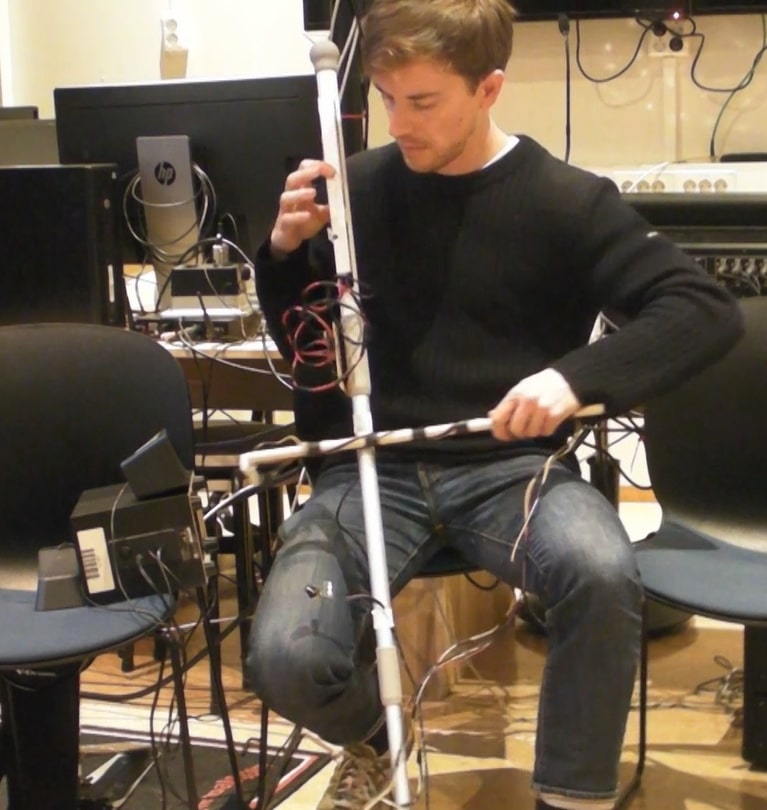
The Feedback Mop Cello: Making Music with Feedback - Part 2
Using a mop to play the feedback
-
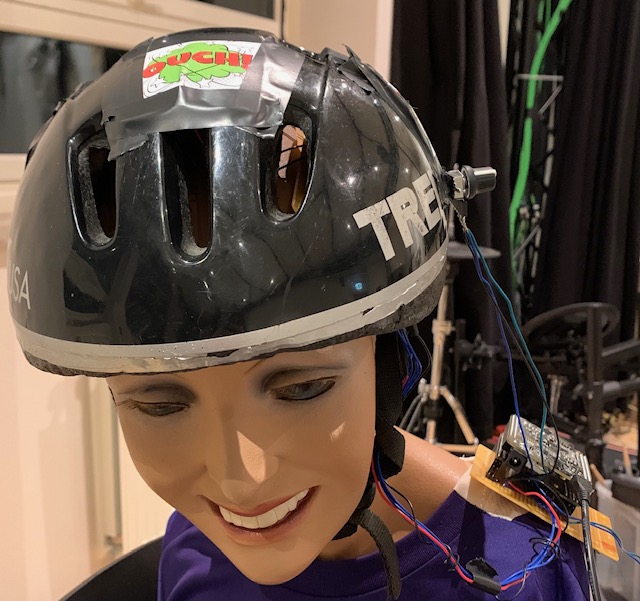
Concussion Percussion: A Discussion
Whether it’s riding a bike or building an handpan-esque interactive music system, always remember to wear a helmet
-

Shimmerion - A String Synthesizer played with Light
Use your phone's flashlight to make music!
-

A Christmas tale of cookie boxes and soldering
How I got the cookie box drum I never knew I wanted for Christmas
-
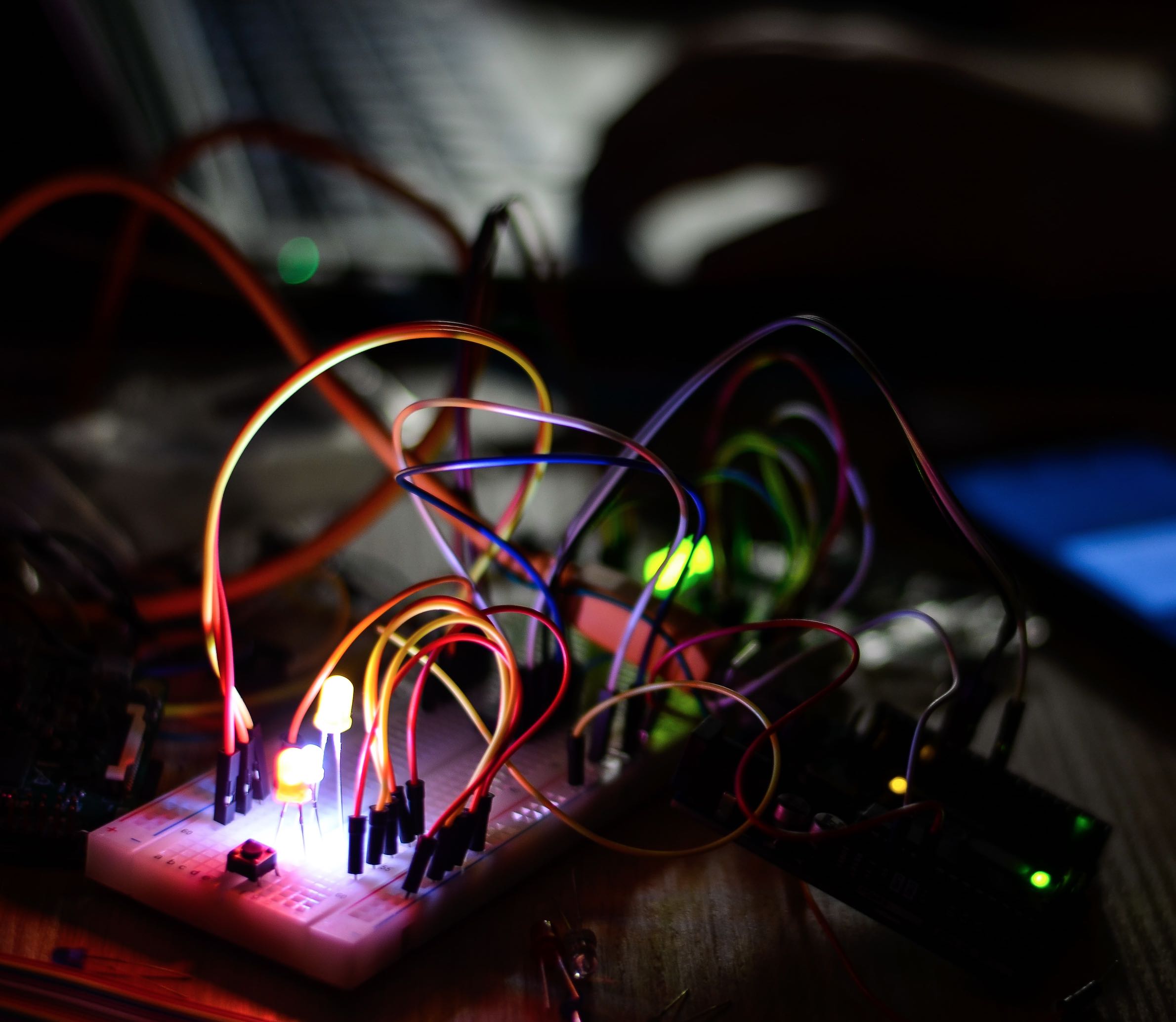
Out-Of-The-Box Sound Sources for your IMS
Exploring alternatives for generating sounds with your interactive music system.
-
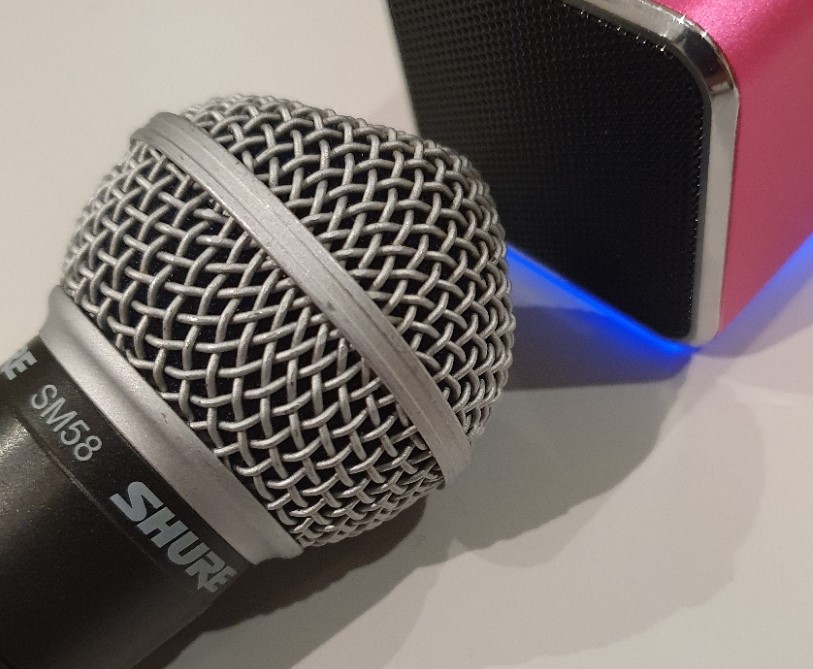
The Feedbackquencer: Making Music with Feedback - Part 1
Using feedback in a sequencer
-

Wii controller as the Gestural Controller
Read this post to find information on a different use of a Wiimote than playing games on your Wii console.
-

Music By Laser: The Laser Harp
If you want to know how to play music with lasers, and maybe learn something about the laser harp, then you should give this a read.
-
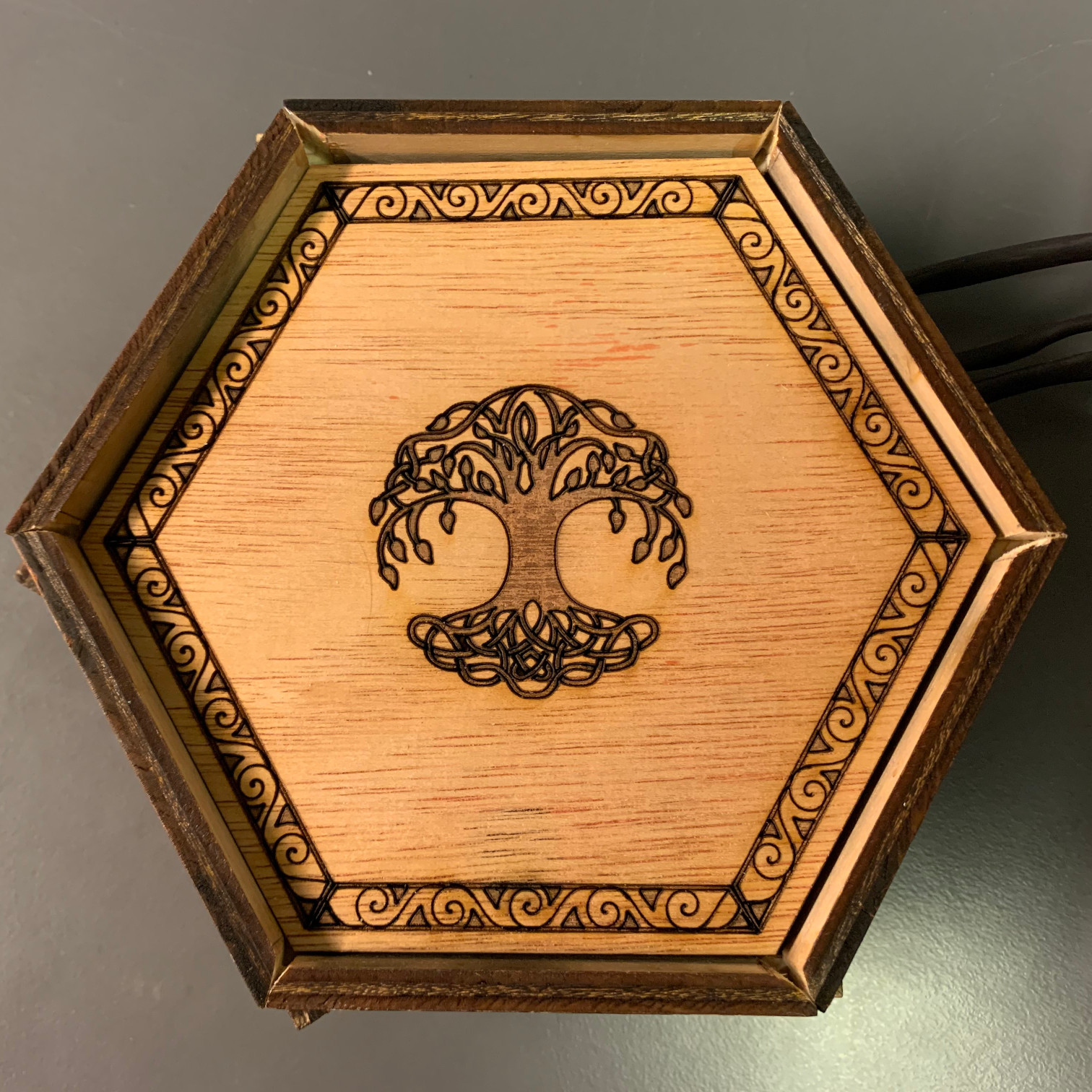
Yggdrasil: An Environmentalist Interactive Music Installation
Plant trees and nurture your forest to generate sound!
-

Why Your Exhibit Tech Failed (and how to fix it)
Why are visitors not using your installation? You might just disagree with yourself, the visitors, and your department or client about their needs and wants. The reason for this disagreement is always the same.
-
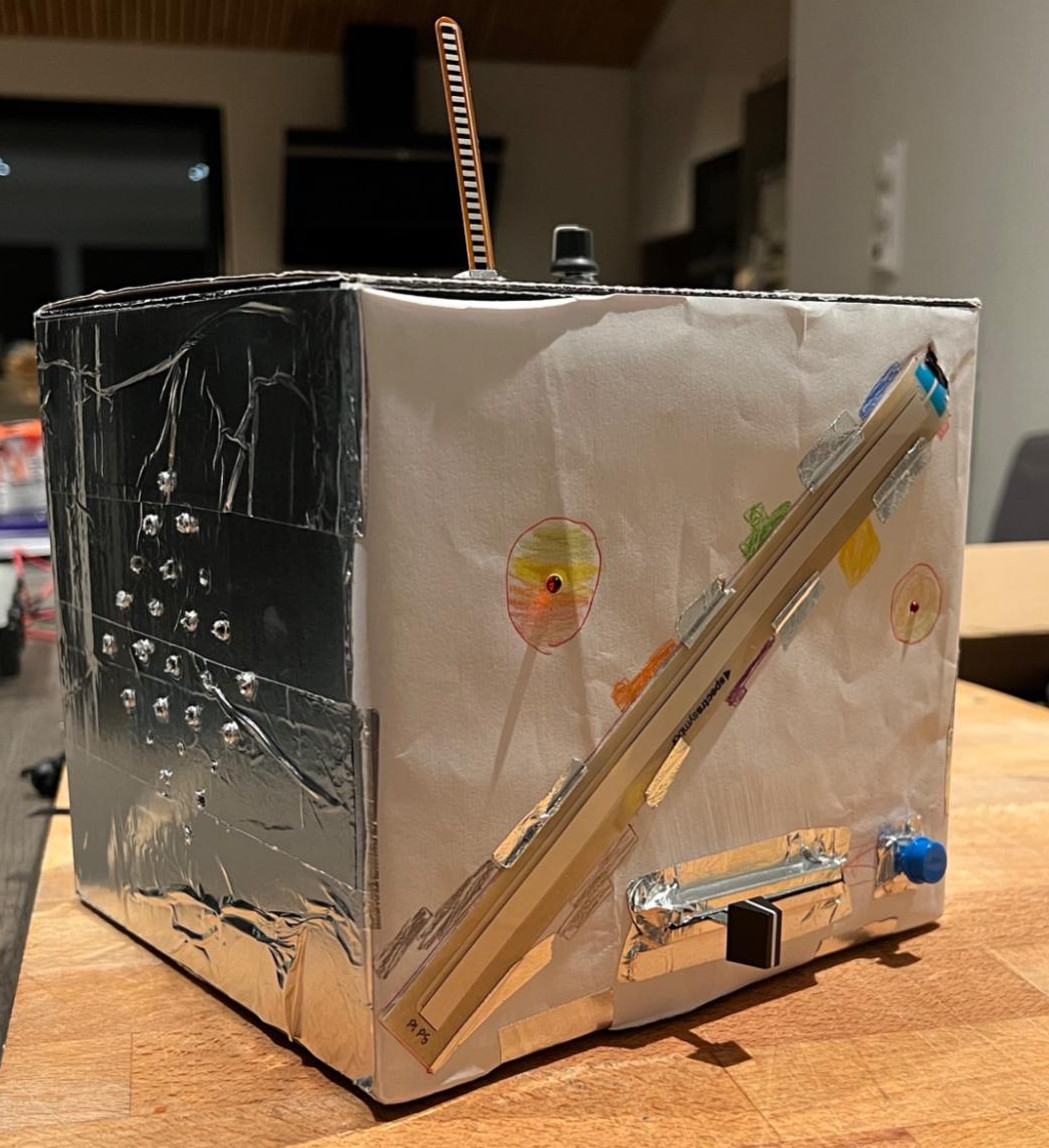
New Interface for Sound Evolution (NISE)
Robiohead is an attempt in a box to explore how an Interactive Music System (IMS) can offer ways to explore sound spaces by evolving sound producing genes in a tactile manner.
-
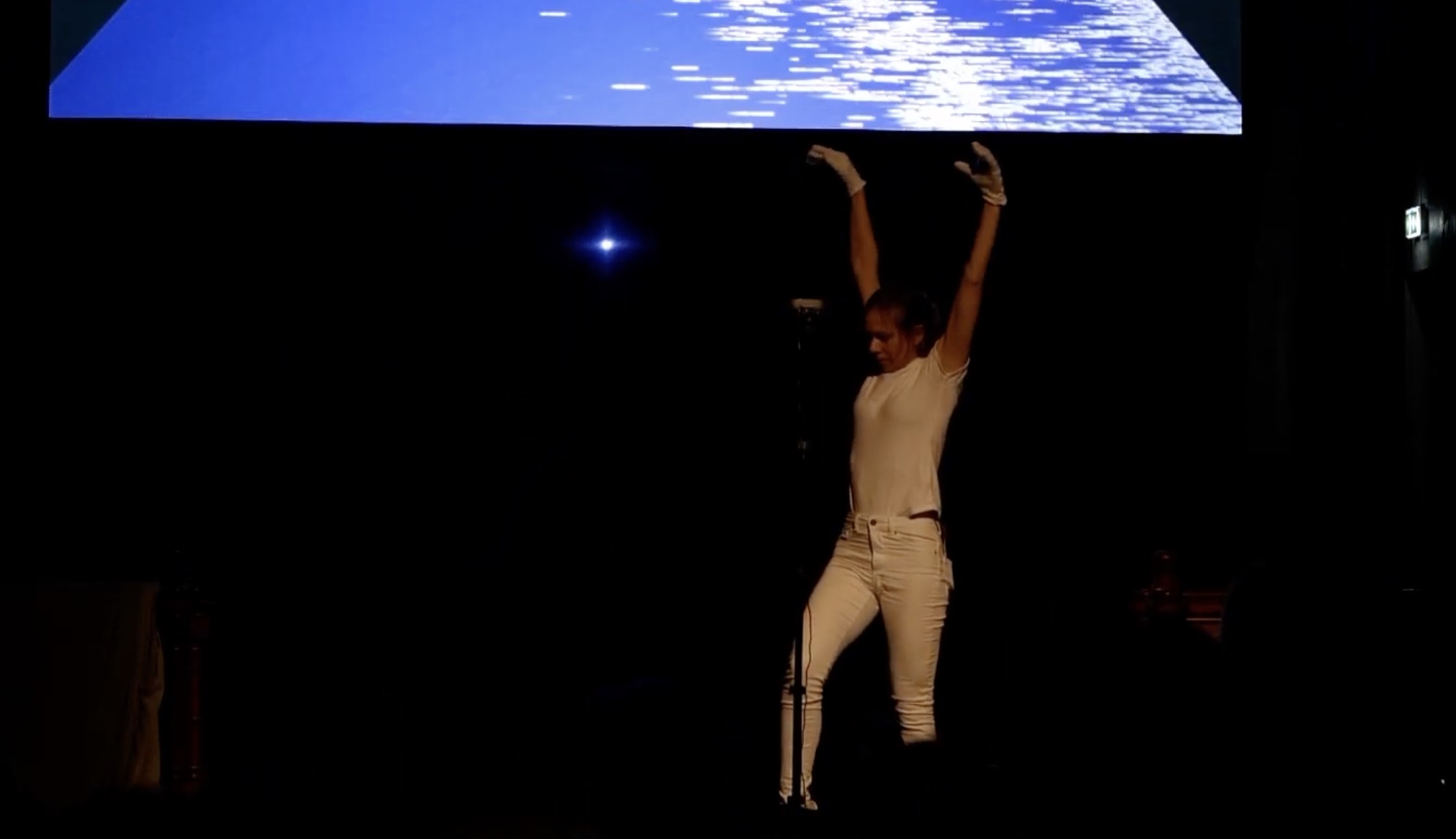
An instrument, composition and performance. Meet the Transformer #1
A review of Natasha Barretts Transformer #1
-
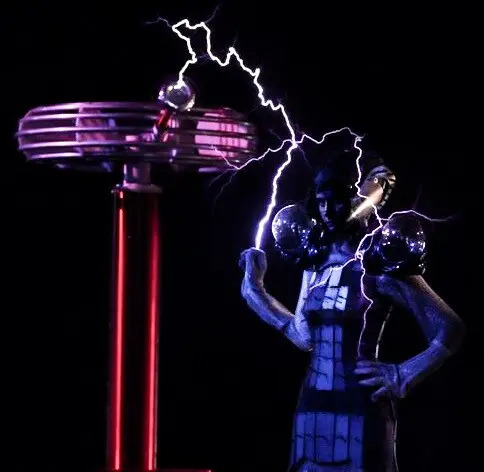
Zeusaphone - The singing Tesla coil
Have you ever seen choreographed lightning?
-

Dråpen, worlds largest interactive music system?
This may be the largest interactive music system you have heard about
-
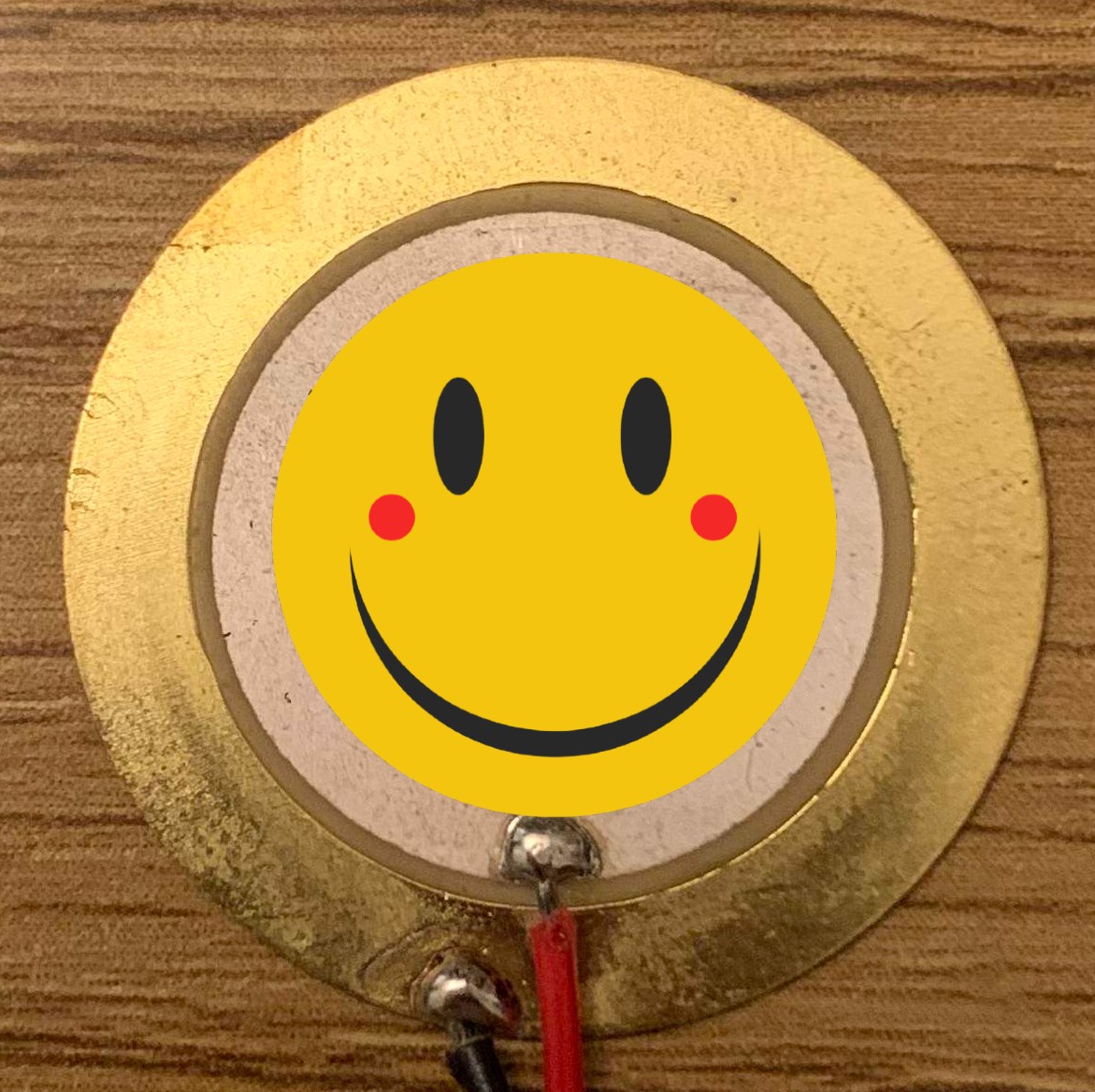
A Contact Microphone And A Dream: To Loop
Join a humble contact microphone on its quest for freedom!
-
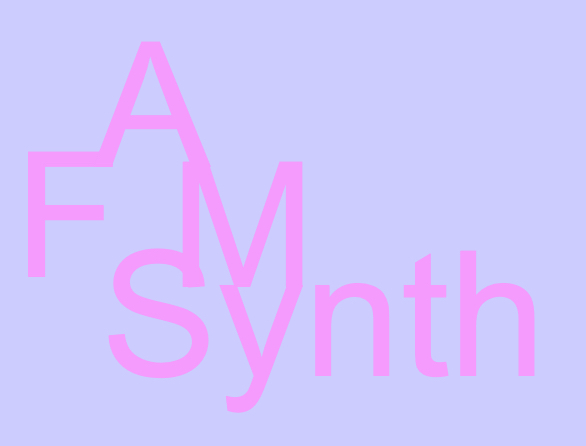
FAM Synthesizer
A simple digital synthesizer with the potential of sounding big, complex and kind of analog. Screenless menudiving included.
-
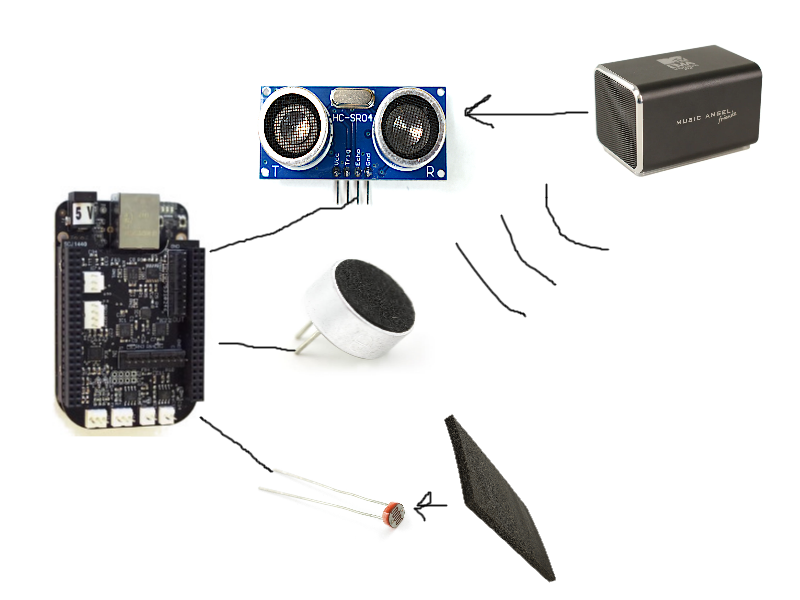
The Triadmin
An instrument without any tangible interface.
-
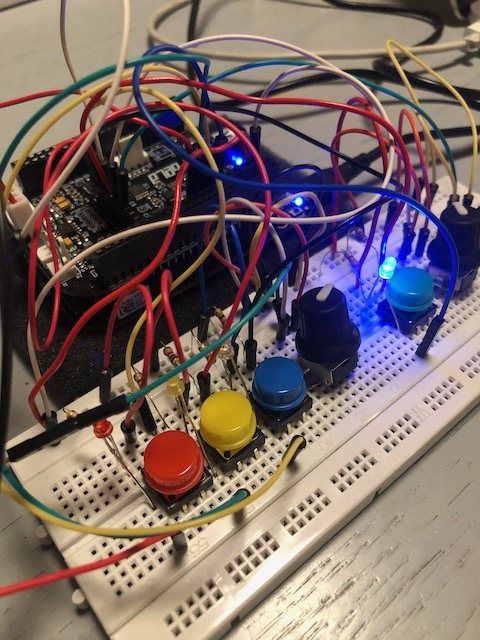
The algorithmic note stack juggler
Interactive composition with the Algorithmic Note Stack Juggler.
-

Sequencephere-Linesequencer
Exploration and design of a drum Sequencer and synth using Bela as an interactive music system with Csound
-
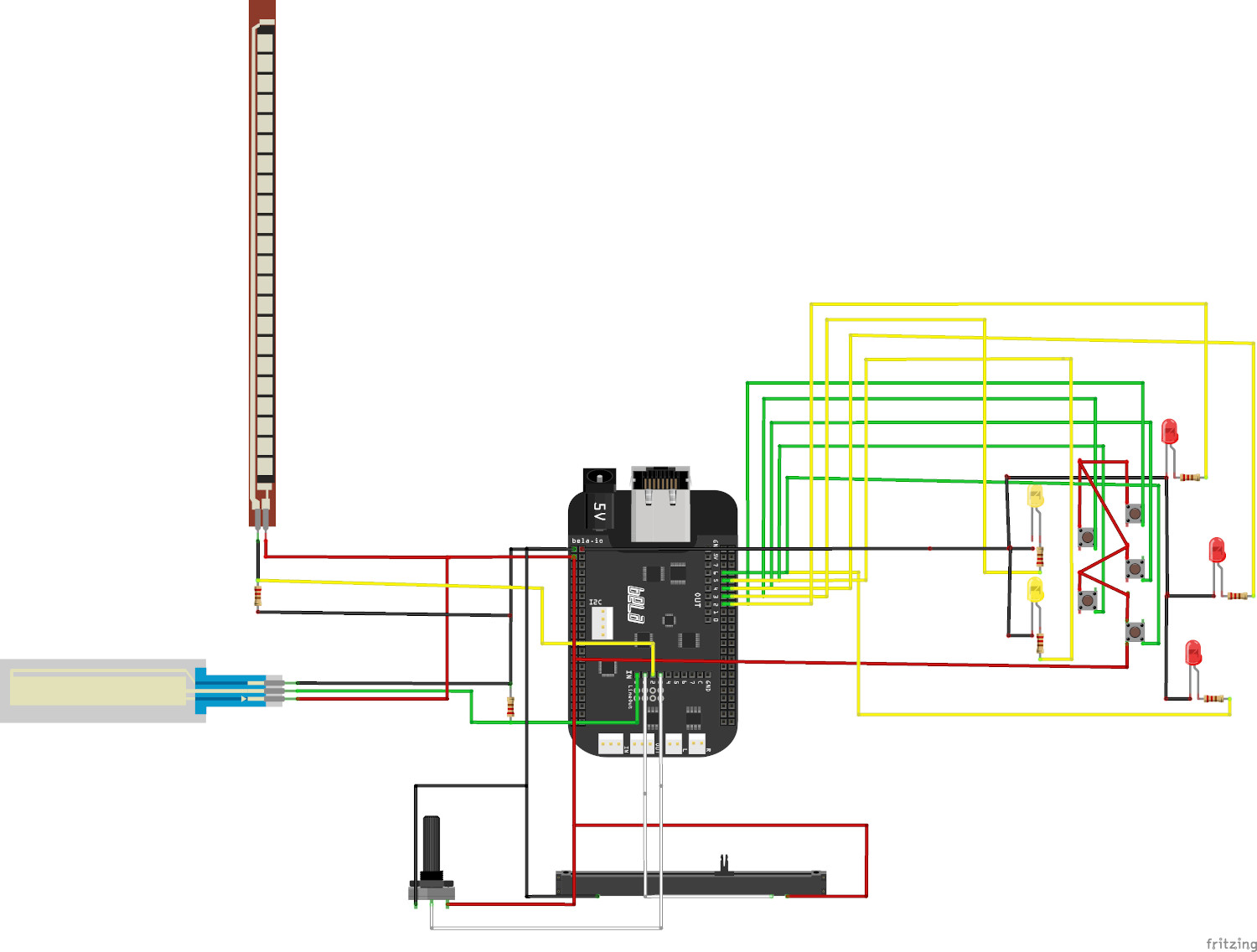
D'n'B
Exploration and design of the 'Drum and Bass' interactive music system with Csound
-
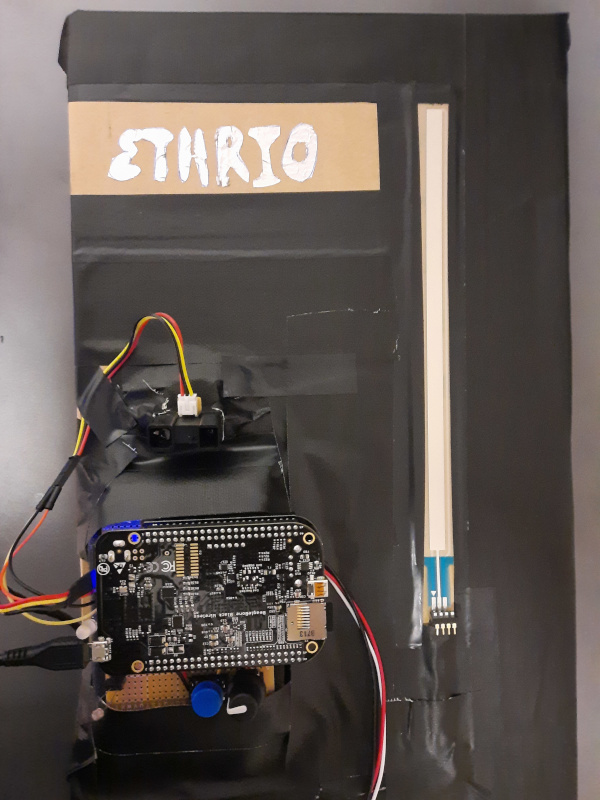
Ethrio
Ethereal sounds from the three dimensions of music: Melody, Harmony, and Rhythm.
-
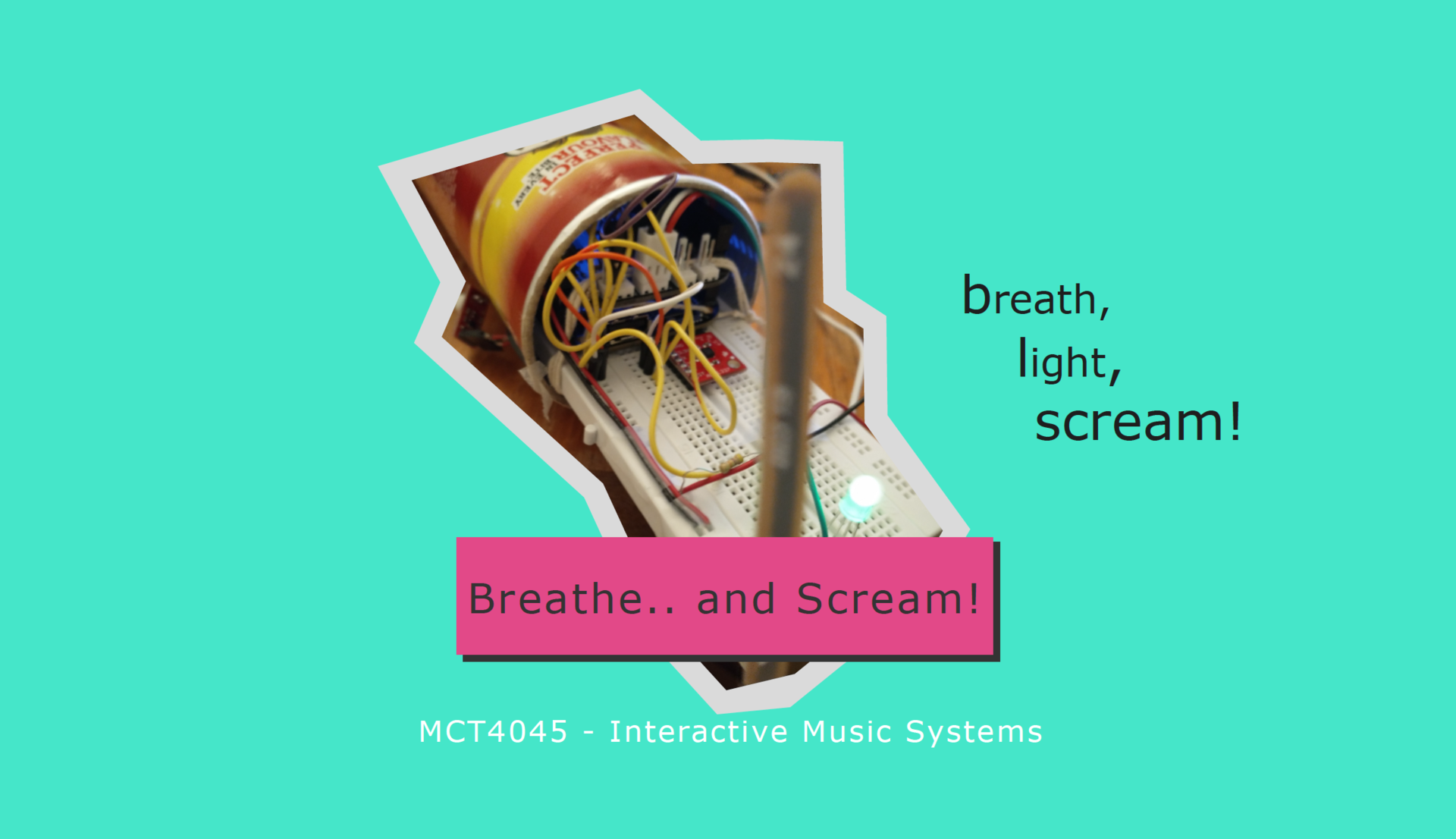
Breathe the light, scream arpeggios!
Multisensorial music interface aiming to provide a synesthetic experience. Touch, light, breathe, scream - make sound!
-
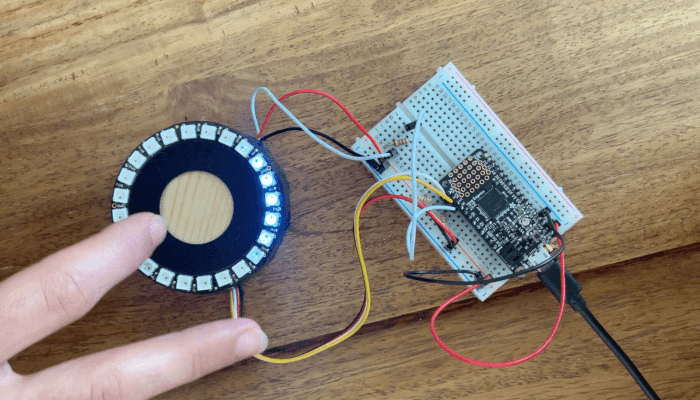
The Ring Synth
Exploring speed as sound shaping parameter
-
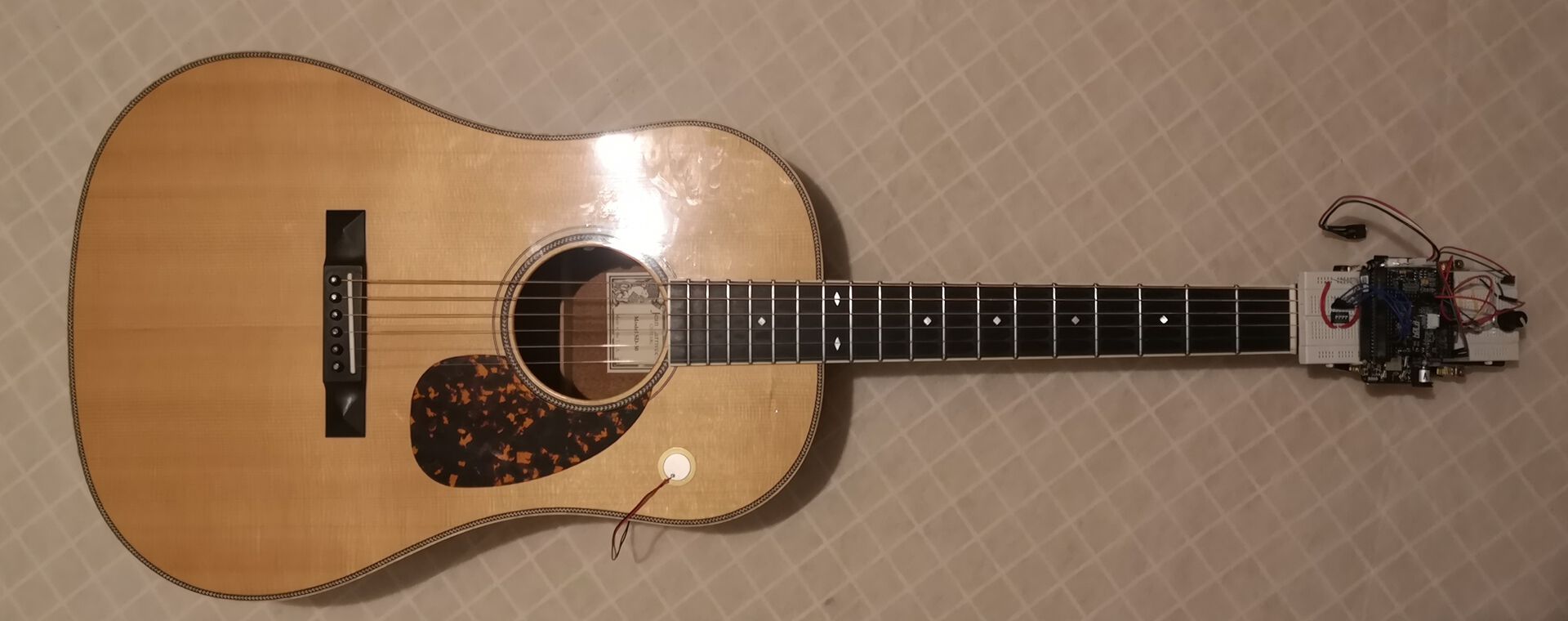
HyperGuitar
An exploration of limitations and how to create meaningful action-sound couplings.
-

The singing shelf bracket
Pure Data (PD) has a lot of possibilities, but when getting the opportunity of putting together all of those digital features into the real word: with real wires, real buttons, real sensors - I must admit - I got a little over-excited!
-
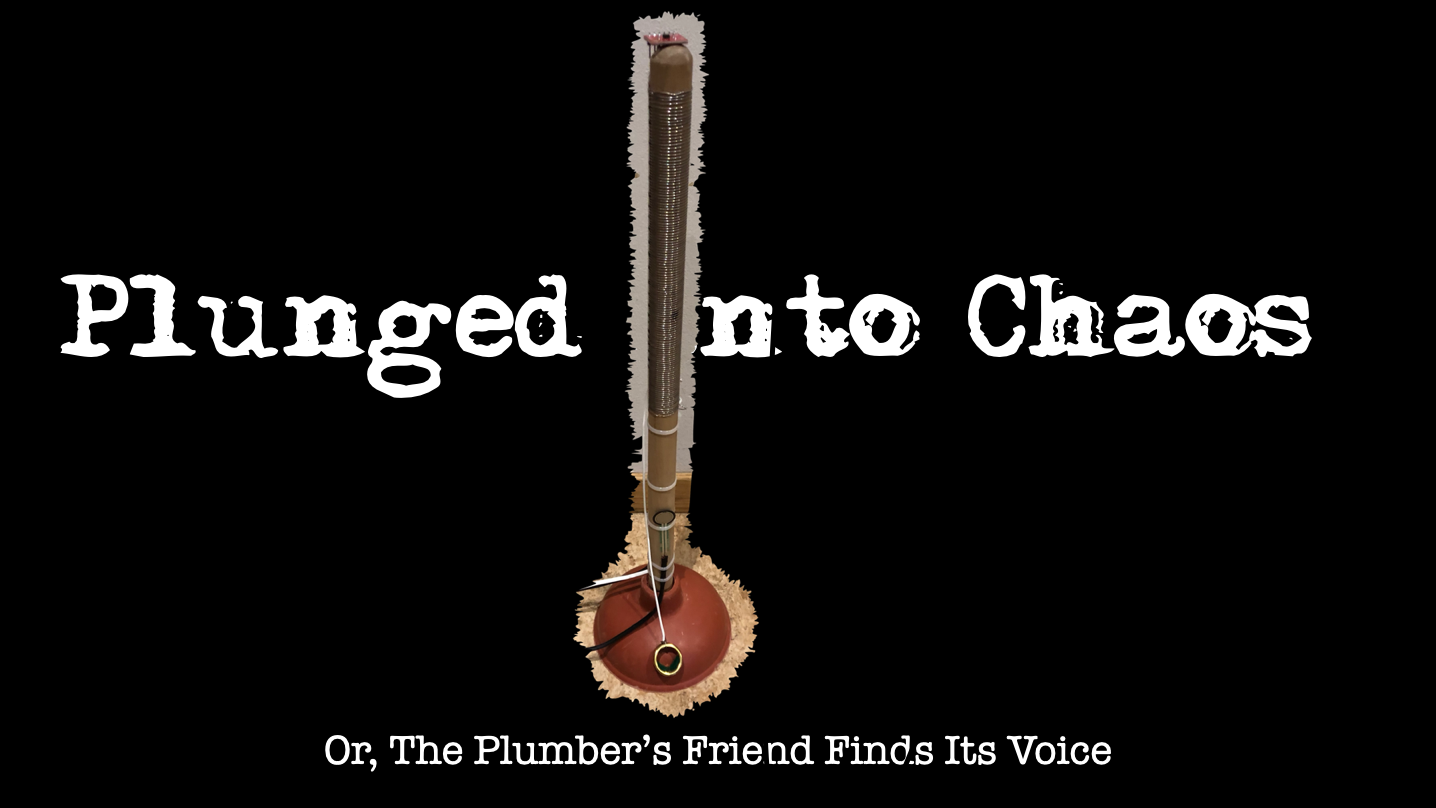
Plunged Into Chaos
Wherein the lowly Oompa-Doompa assumes its ultimate form.
-
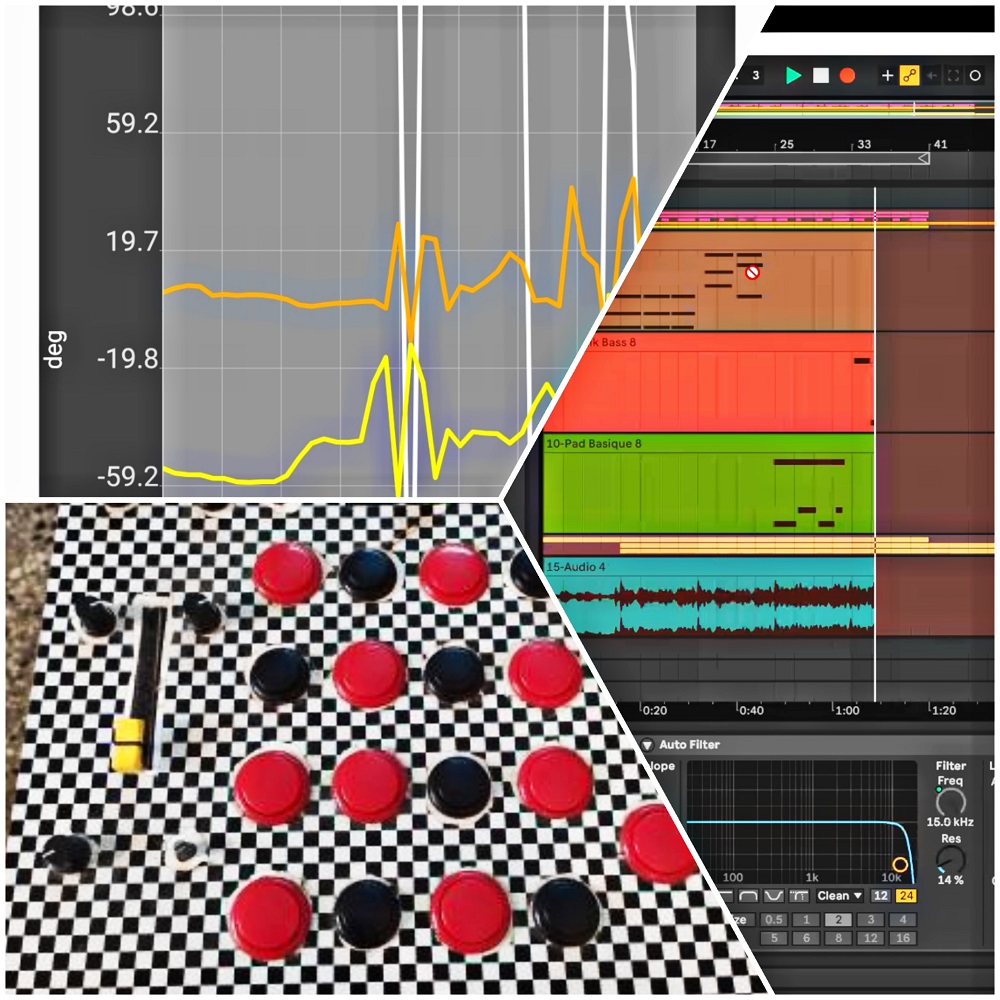
MIDI and Effects: the Musicpathy
The magic of controlling instruments from 1000km apart
-
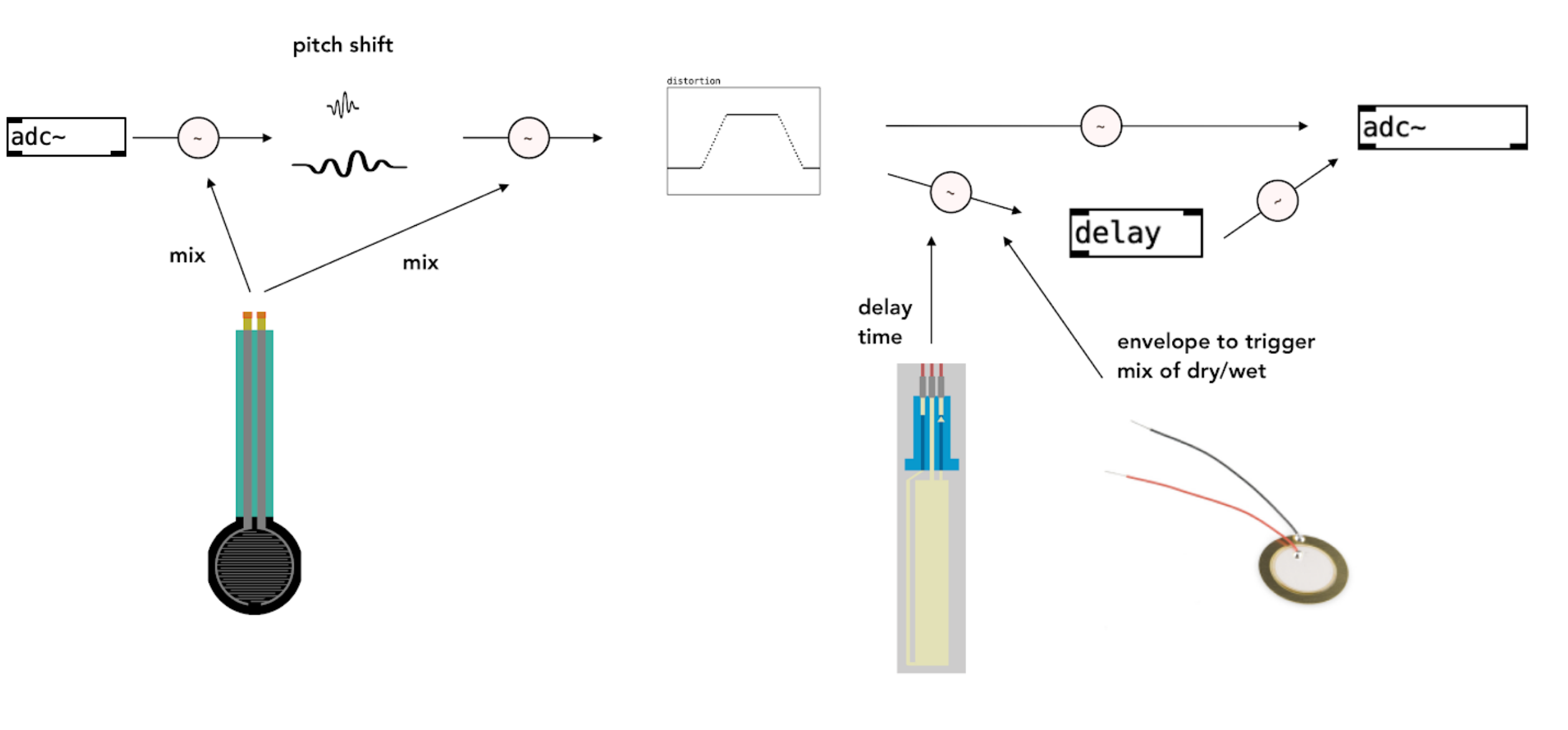
Voice augmentation with sensors
Trying to achieve a choir-like effect by augmenting microphone input with sensory features
-
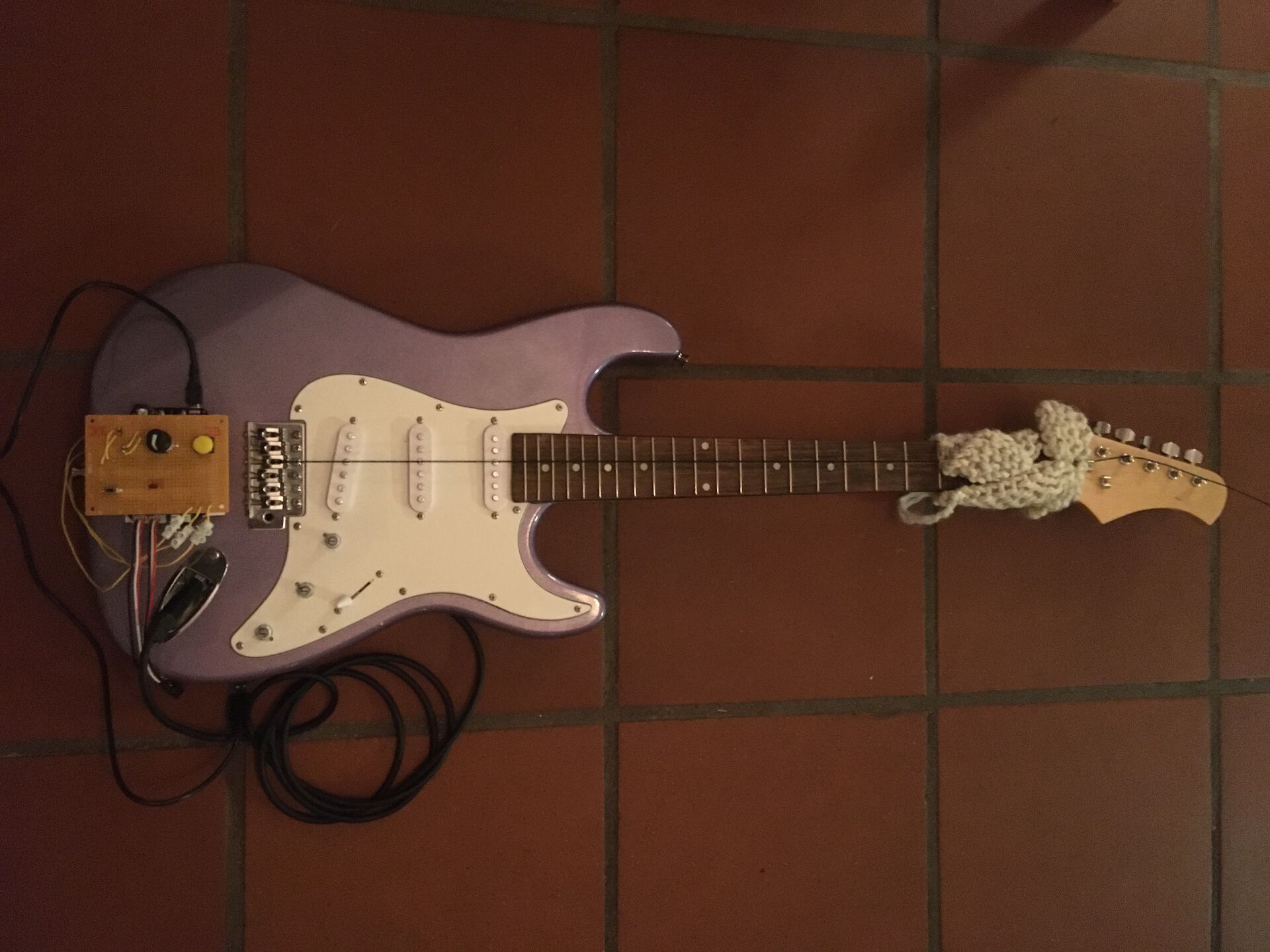
SamTar
An interactive music system exploring sample-based music and improvisation through an augmented electric guitar
-

The Psychedelic Journey of an Unexpected Spaceship
An electronic music performance in an audio-visual digital environment. Let's go through the galaxy in a crazy spaceship and have an experience full of color and funny turbulence.
-
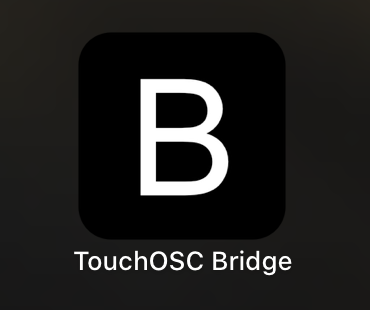
A Live Mixer made from mobile devices
How does it look to control audio effects in real-time using gestures?
-
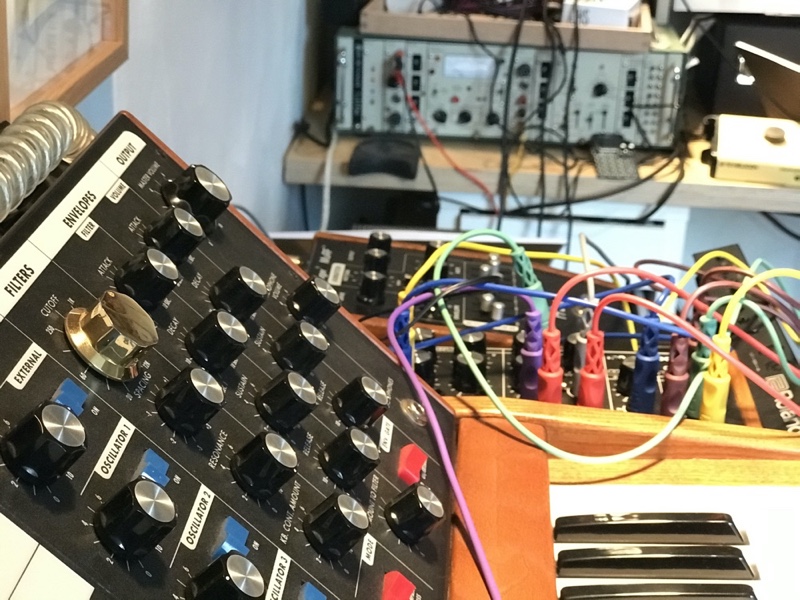
cOSmoChaos
Cosmos and chaos are opposites—known/unknown, habitated/unhabitated—and man has through all times been seeking to create cosmos out of chaos. But what has this to do with GyrOSC controlling my hardware … well, everything.
-
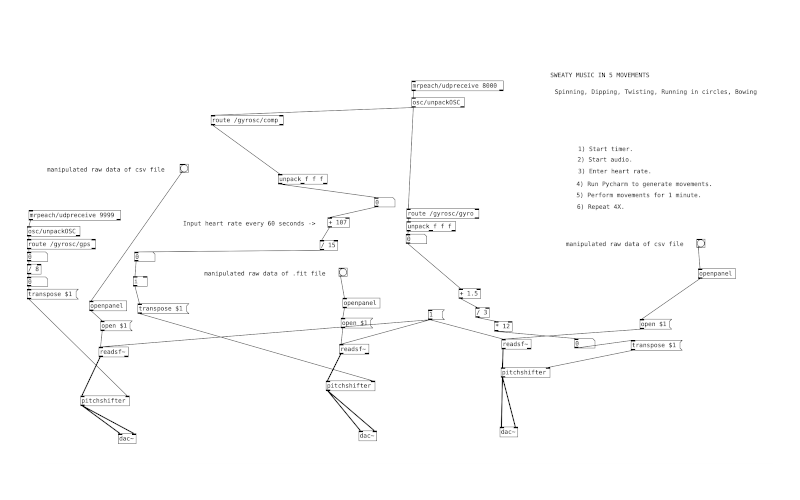
Chance Operations, Rudimentary Pure Data (PD), and a Bunch of Spinning in Circles
Sometimes you want to compose and get your workout. Experience a chance composition that may leave the performer sweating.
-

Improvised electronica with TouchOSC
In this project, I wanted to explore the options available when performing electronic music live with no pre-recorded / pre-sequenced material.
-
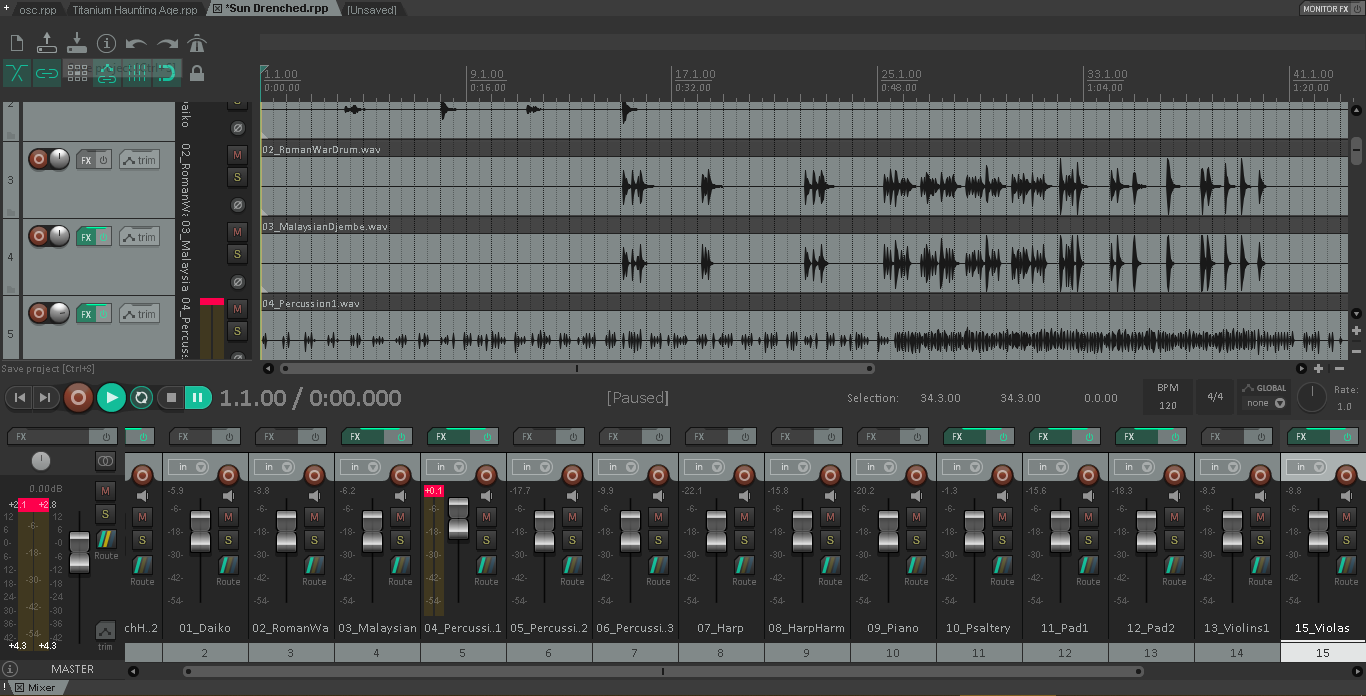
Real-time audio processing with oscHook and Reaper
Fun and not too complicated interactive audio processing.Using oscHook to transmit sensordata from an Android phone to OSC Router and then to Reaper to control the values of certain effects' parameters.
-

The Dolphin Drum
My granular synthesis percussive instrument from the Interactive Music Systems course.
-
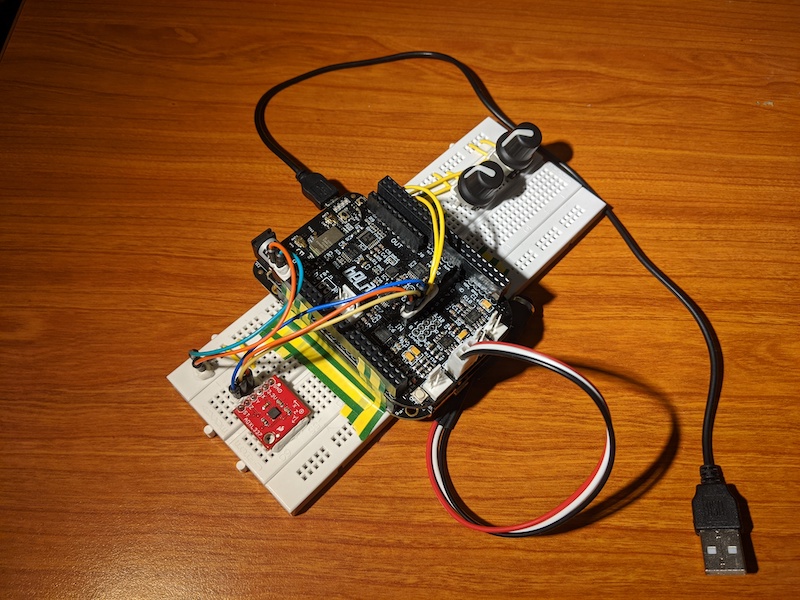
Musings with Bela
A tale of accelerometers, knobs, an EEG and the attempt to tame sound with my mind. Follow along!
-

The voice of a loved one
Can AI really know what our facial expressions mean?
-
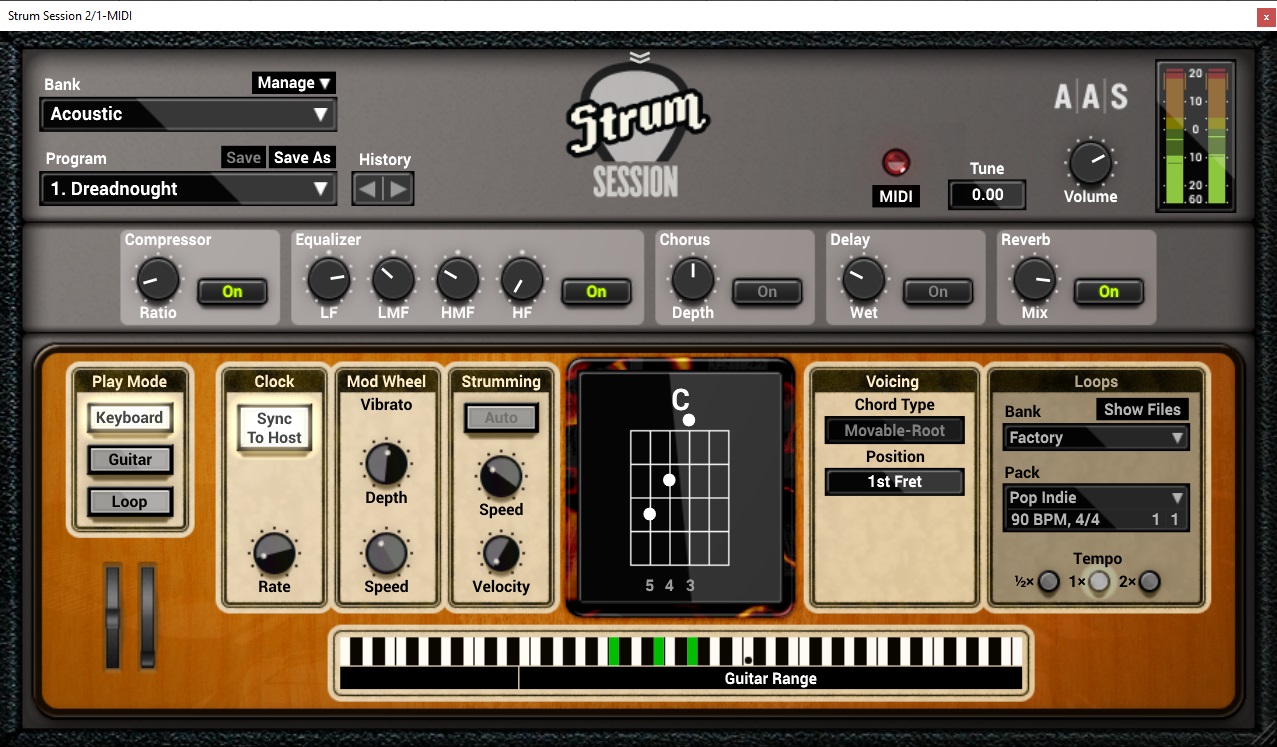
Making virtual guitar playing feel more natural
Can using sensors, buttons and joysticks to play a virtual Guitar resemble the experience of playing a real guitar and result in a more natural performance than using a keyboard for input?
-
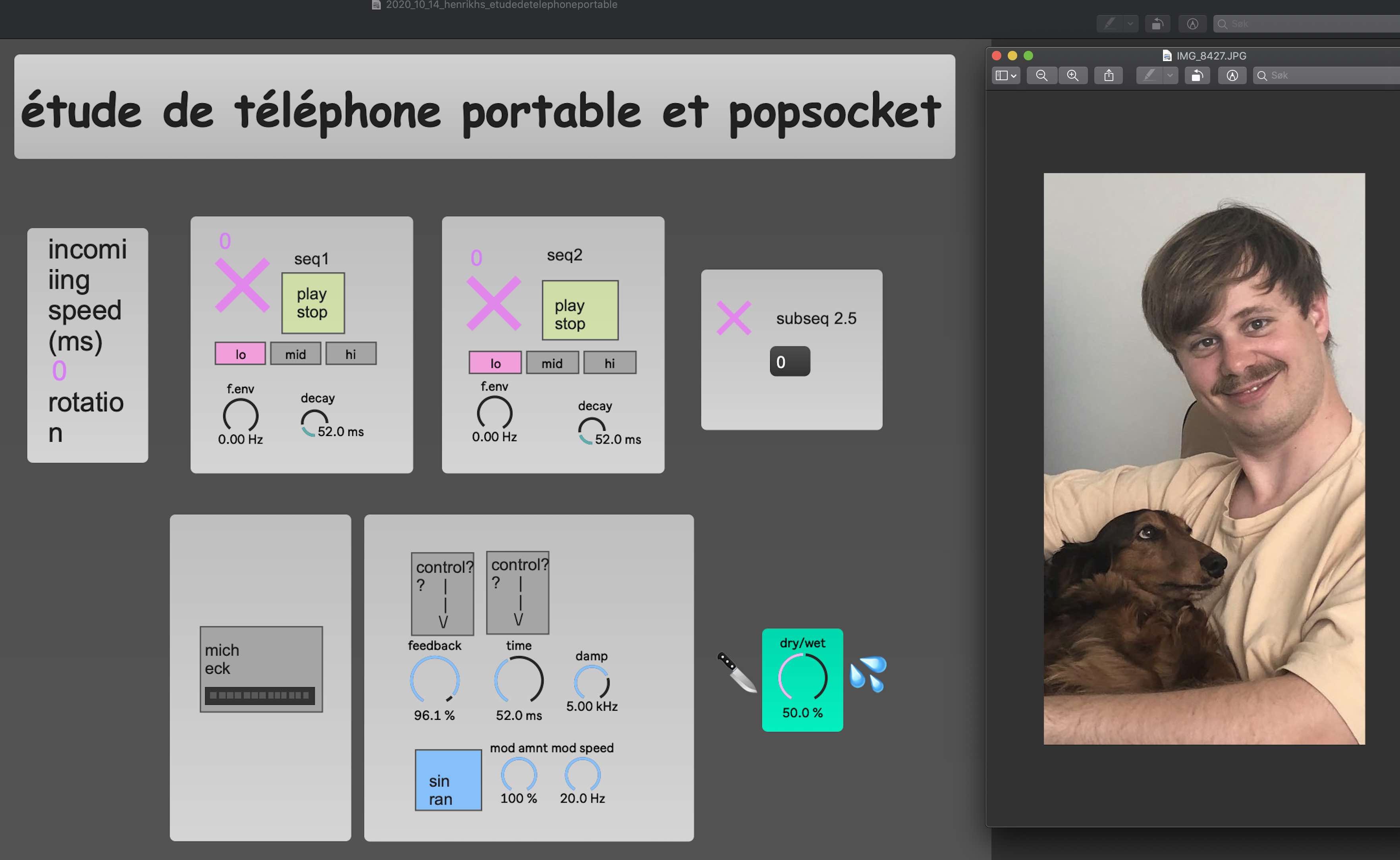
Étude de téléphone portable et popsocket
Click to see a cute dog making strange music. Unbelievable. I think that sums it up.
-
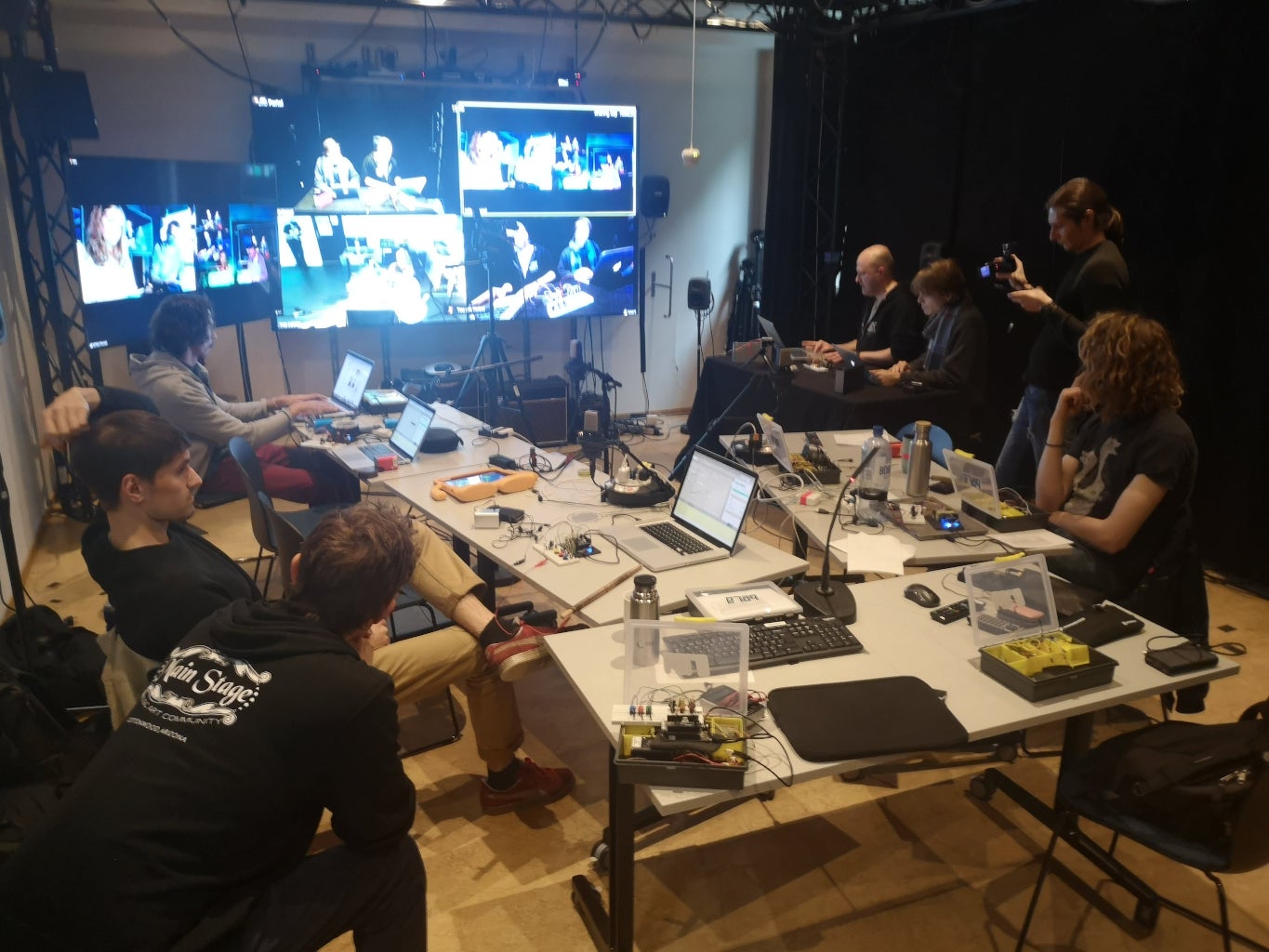
Staggering towards the light
During a hackathon in our introduction course to physical computing, we developed a prototype of a DMI. In our blog post from this project we explained how the system was built and gave a short summary of our performance. In this blog post however, we will look at the instrument from an HCI-perspective. Where the main focus will be a summary of the problem space, the research question, the methodology used and our main findings and contributions.
-

Prototyping musical instruments
Prototyping musical instruments in the name of recycling - exploring Orchestrash from an HCI point of view
-

Orchestrash hackathon performance
The title of our project is "Orchestrash" inspired by the theme of the competition and our approach to solving it, by making individual instruments controlled by recycled materials and "recycling" sound by sampling
-
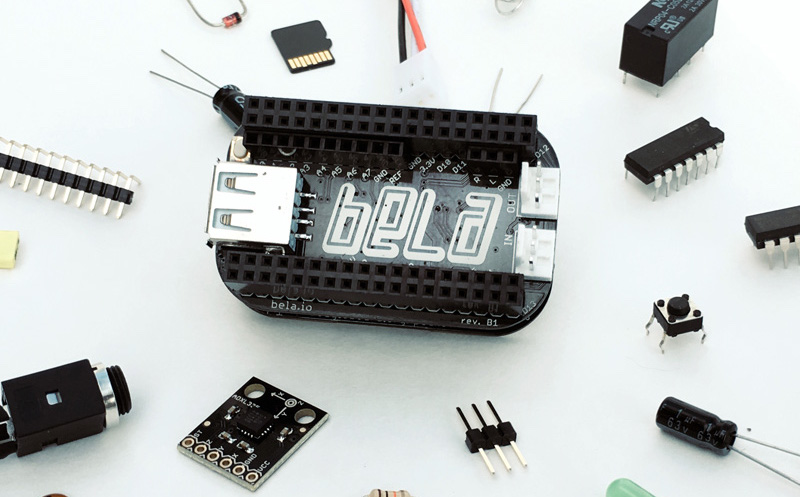
The B Team: Mini-Hackathon
For the MCT 4000 mini-hackathon in the physical computing module we tried to send sound at the speed of light.
-

Physical Computing: Heckathon: Group C
Taking our cue from the main theme of the Day 4 Hackathon of “Recycling”, Team C chose the 2017 U.S. withdrawal from the Paris Agreement on climate change mitigation as a central theme in our work.
-

Wizard_of_Vox
Wizard Of Vox - Wizard Of Vox is a gesture-based speech synthesis system that can be can be “made to speak”
-
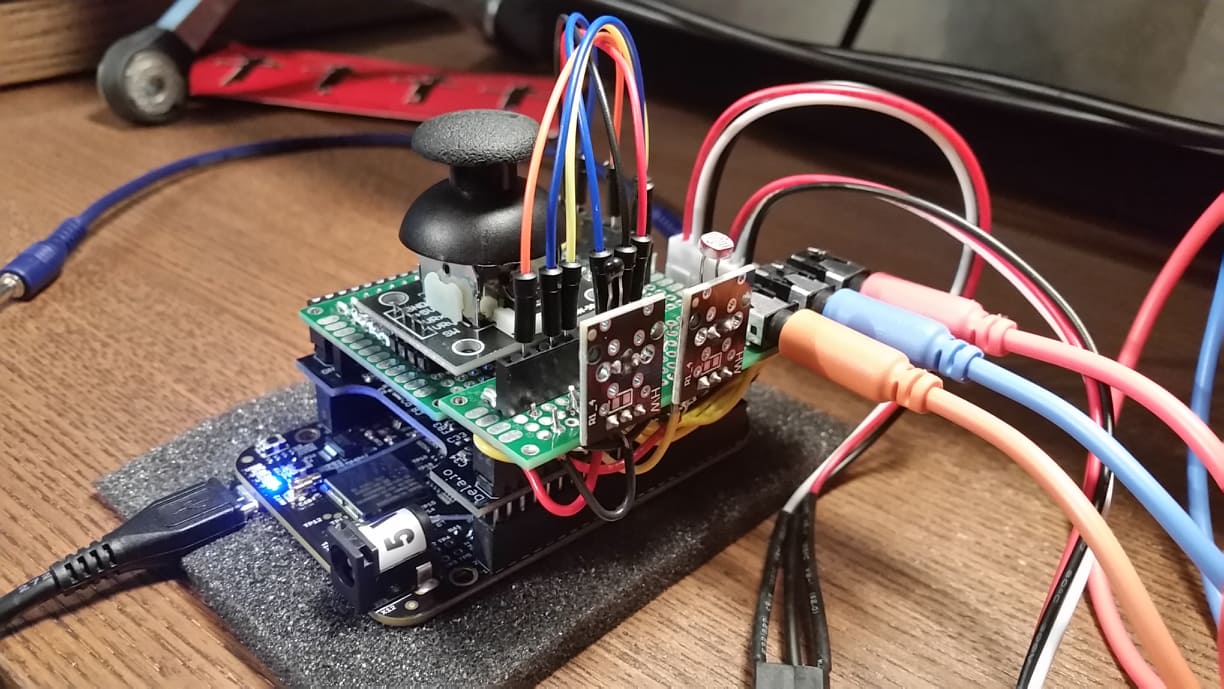
The Fønvind Device
For my interactive music systems project, I wanted to make use of the Bela's analog inputs and outputs to make a synthesizer capable of producing not only sound, but also analog control signals that can be used with an analog modular synthesizer. This post goes briefly through some of the features and the design of my system, and at the end there is a video demonstration of the system in use.
-
Instant Music, Subtlety later
When drafting ideas in unknown territory one can become overwhelmed with the sheer endless options to create an IMS (interactive music system). Here a real-time processing board for voice with gesture control.
-
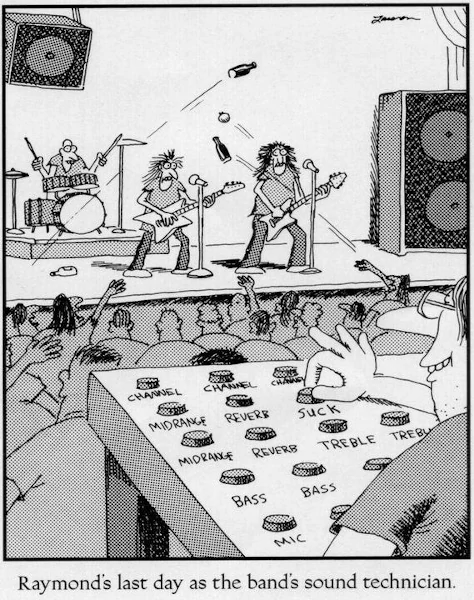
The B Team: To Heck and Back
Today we began our experiments with some lofi hardware, simple contact mics, speakers, batteries, and some crocodile cables to connect it all. We left in pieces.
-

Physical Computing Day One: Victorian Synthesizer Madness! Group C Reports In From Heck
The first day of Physical Computing started and ended with a bit of confusion in the Portal, but that is par for the course. Once we set up the various cameras and microphones, and dealt with feedback, echo, etc, the fun began!
-
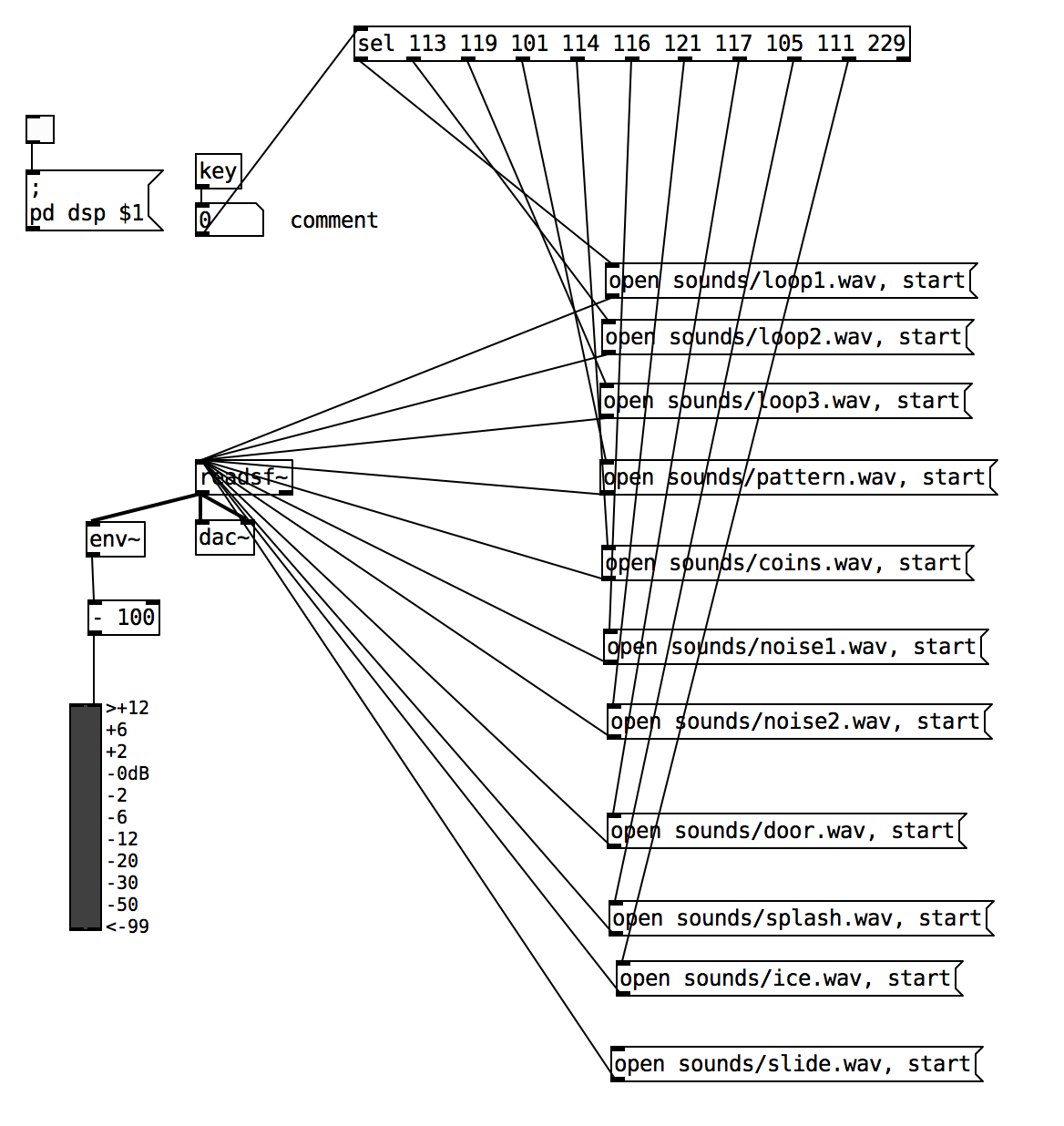
Physical computing Day 1 - Group B
First day of physical computing
-
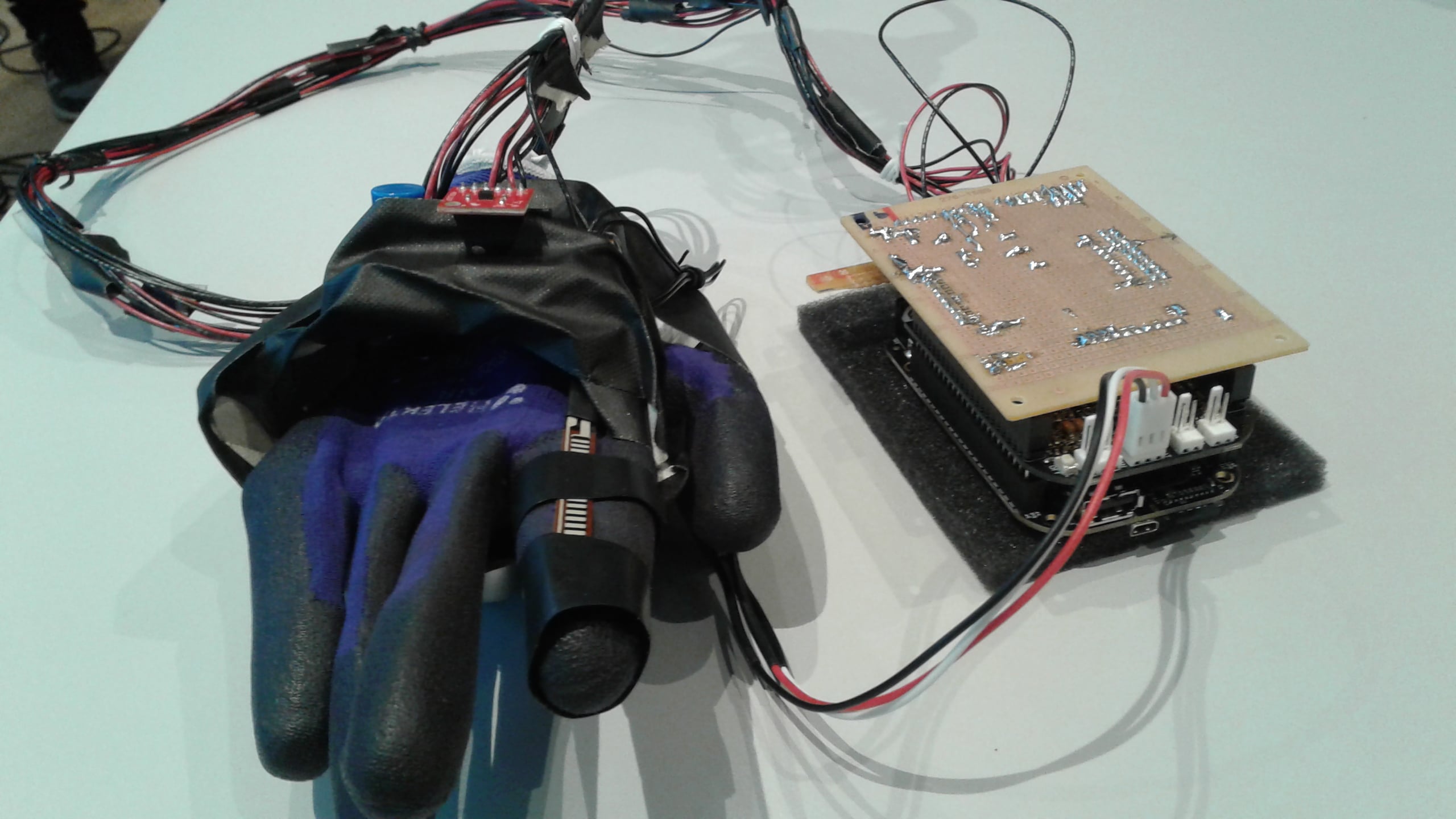
AudioBend
My project idea for the Interactive Music Systems was to build a glove that can manipulate sound. It was actually inspired by seeing the “mi.mu Gloves”. The paper on the “Data Glove” gave me ideas on the design aspect of the glove although the way it works is a bit more different than what I use in my glove. “Data glove” uses multiple flex sensors on the fingers and force sensitive sensors to contact the finger tips and an accelerometer to get data from the wrist control. In my glove I used flex sensor on index finger, 3 – axis accelerometer on my hand and a Distance Ultrasonic sensor on my palm. Attaching those stuff to the glove was a bit tricky but “ducktape” saved my life.
-
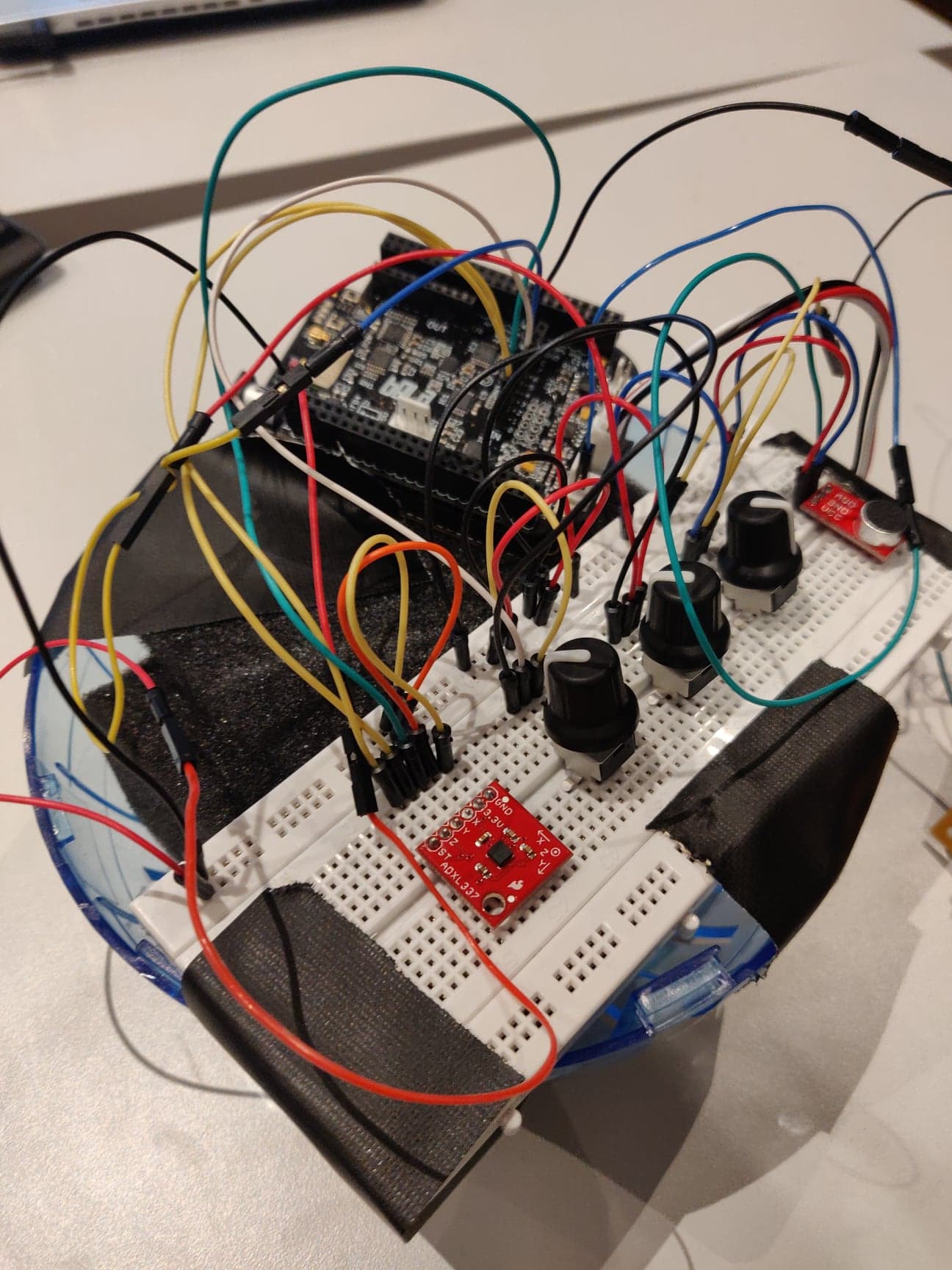
Alien_Hamster_Ball
The Alien Hamster ball - an instrument expressed through a 3D space
-
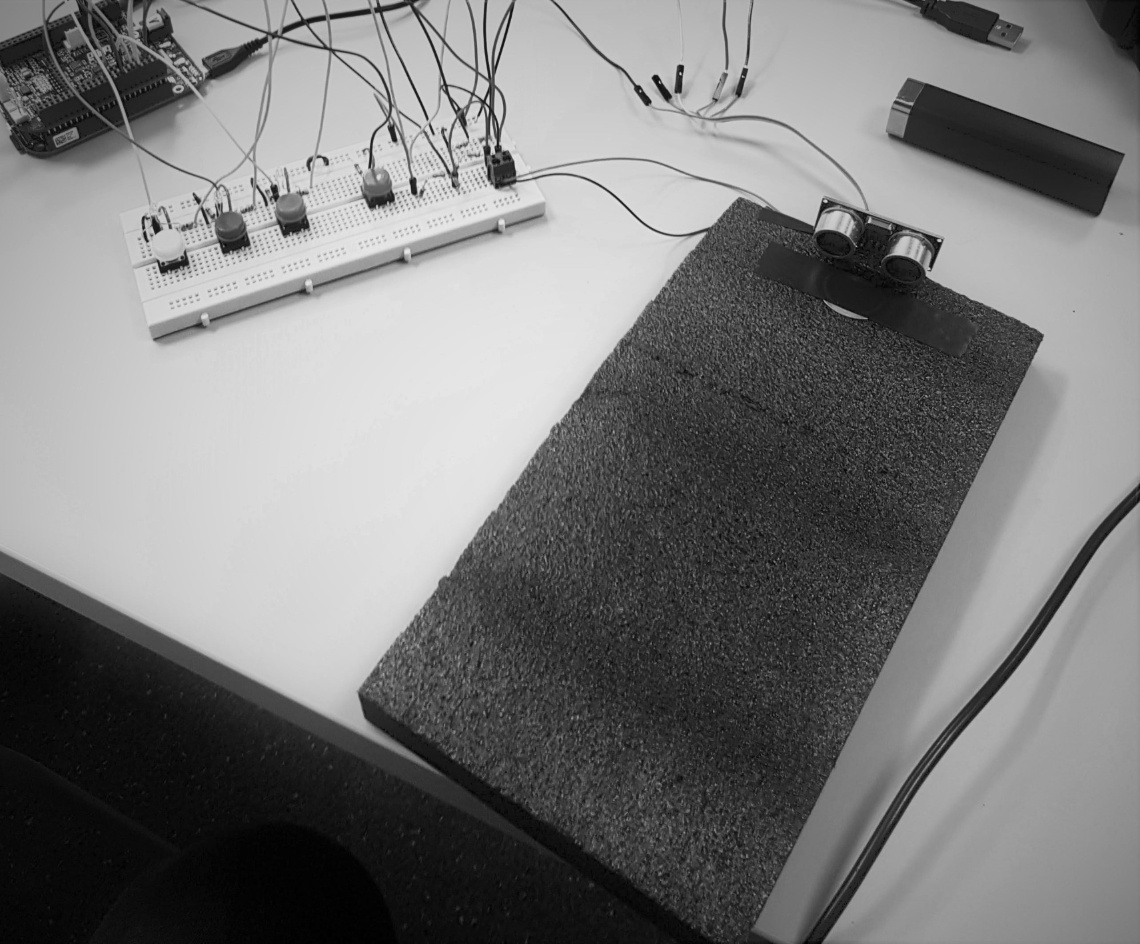
LoopsOnFoam
During a 2-week intensive workshop in the course Interactive Music Systems I worked on the development of an instrument prototype, which I named LoopsOnFoam.
-
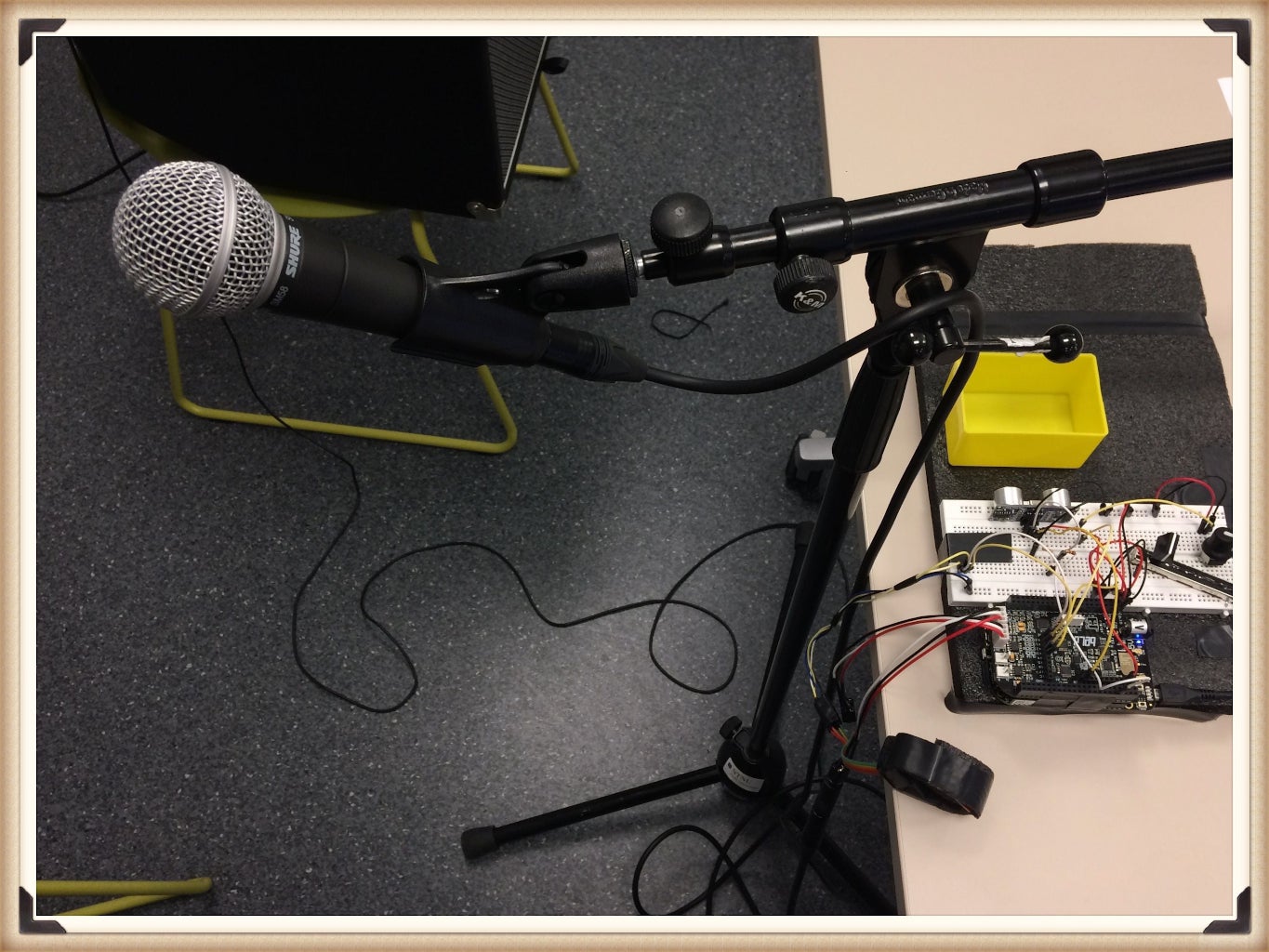
Microture
Microture is an interactive music system, based on manipulation of the input sound (microphone sound) with small gestures..
-
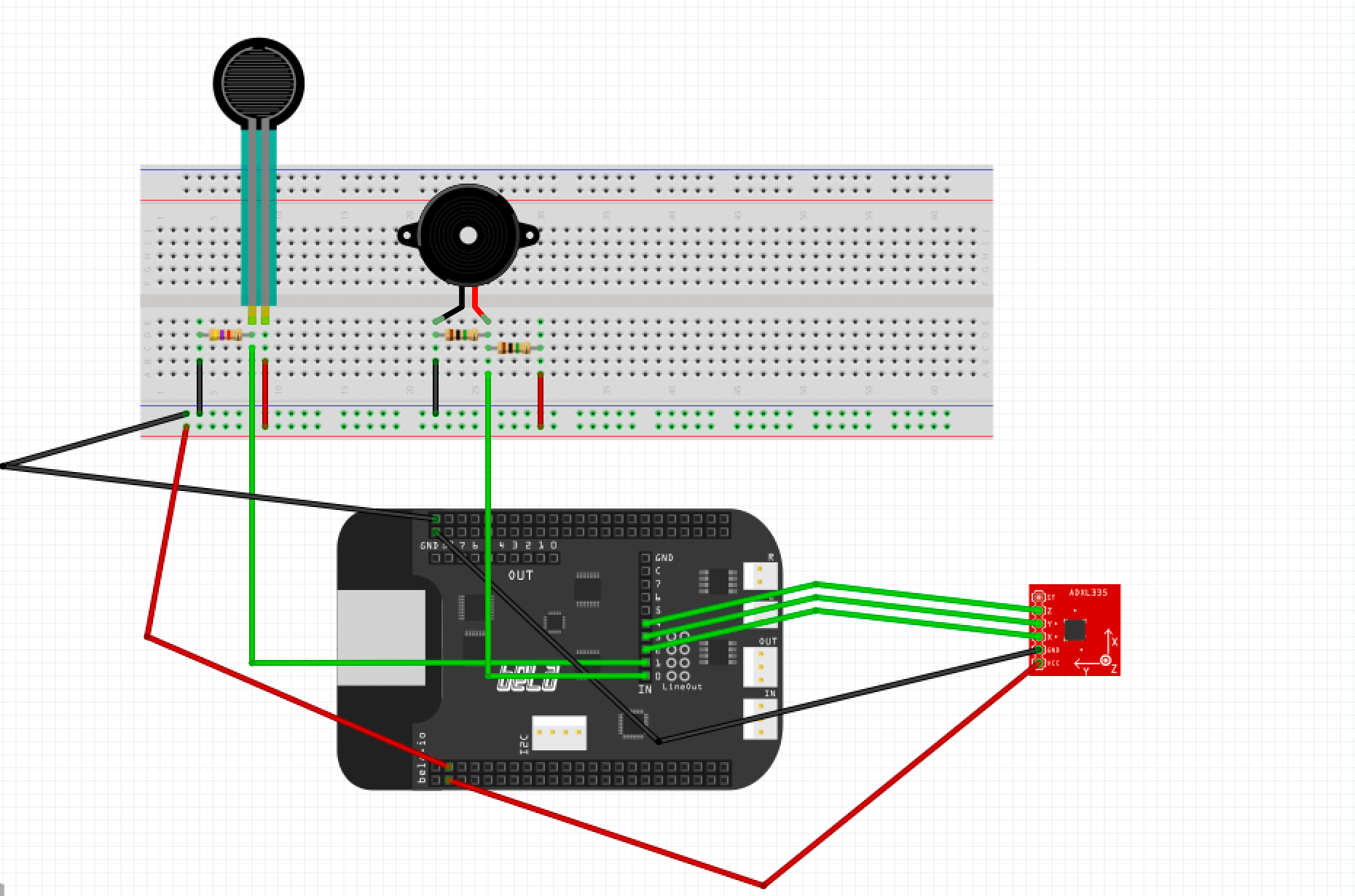
Body Drums - A wearable drumset
Body Drums For the course MCT4045 - Interactive Music Systems, I built a wearable drumset. The wearable drumset consists of a piezo-element placed on one hand, a force-sensing resistor on the other and a accelerometer on the fot. These sensors are then used to trigger one file each. In my case I used a kick drum sound for the foot, snare drum sound for the piezo element and a hi hat sound for the FSR. Then when these sensors are triggered, the sound that are mapped to the sensor will be played. For example if I stump my foot, the kick drum sound will be played.
-
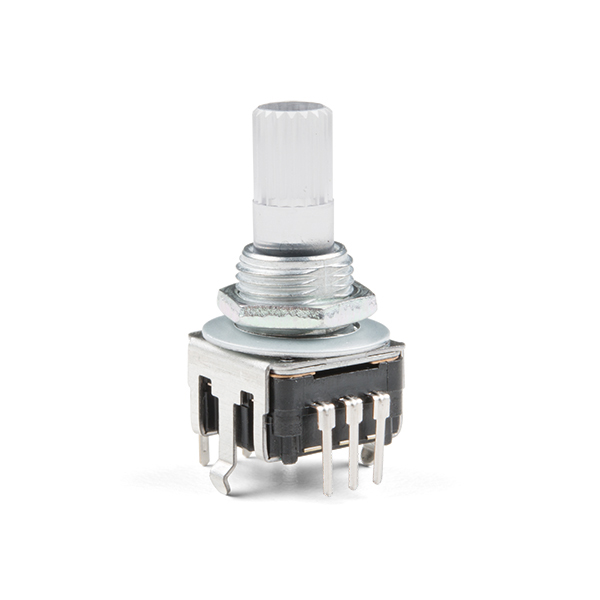
The HySax - Augmented saxophone meant for musical performance
an augmented saxophone meant for musical performance, enabling background layer and delay to be controlled via gestures.
-

MCT Heroes
During our Human Computer interaction seminar, Anna Xambó asked us to create a blog post with notable people in music technology that inspire us. Here are the submissions from the class.
-
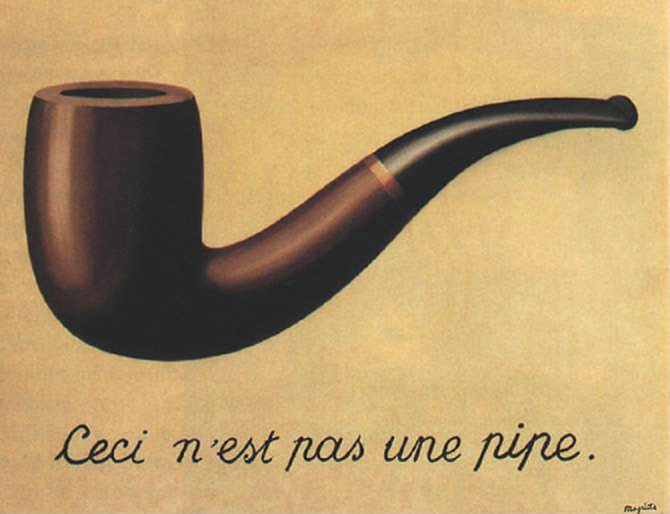
A-team - Art is anything you can get away with
We were set our end of week task, incorporating the human interaction technology we have been exploring all week (and in our previous blog posts). After these few days of training - it was finally time to put it to the test, and design an instrument!
-
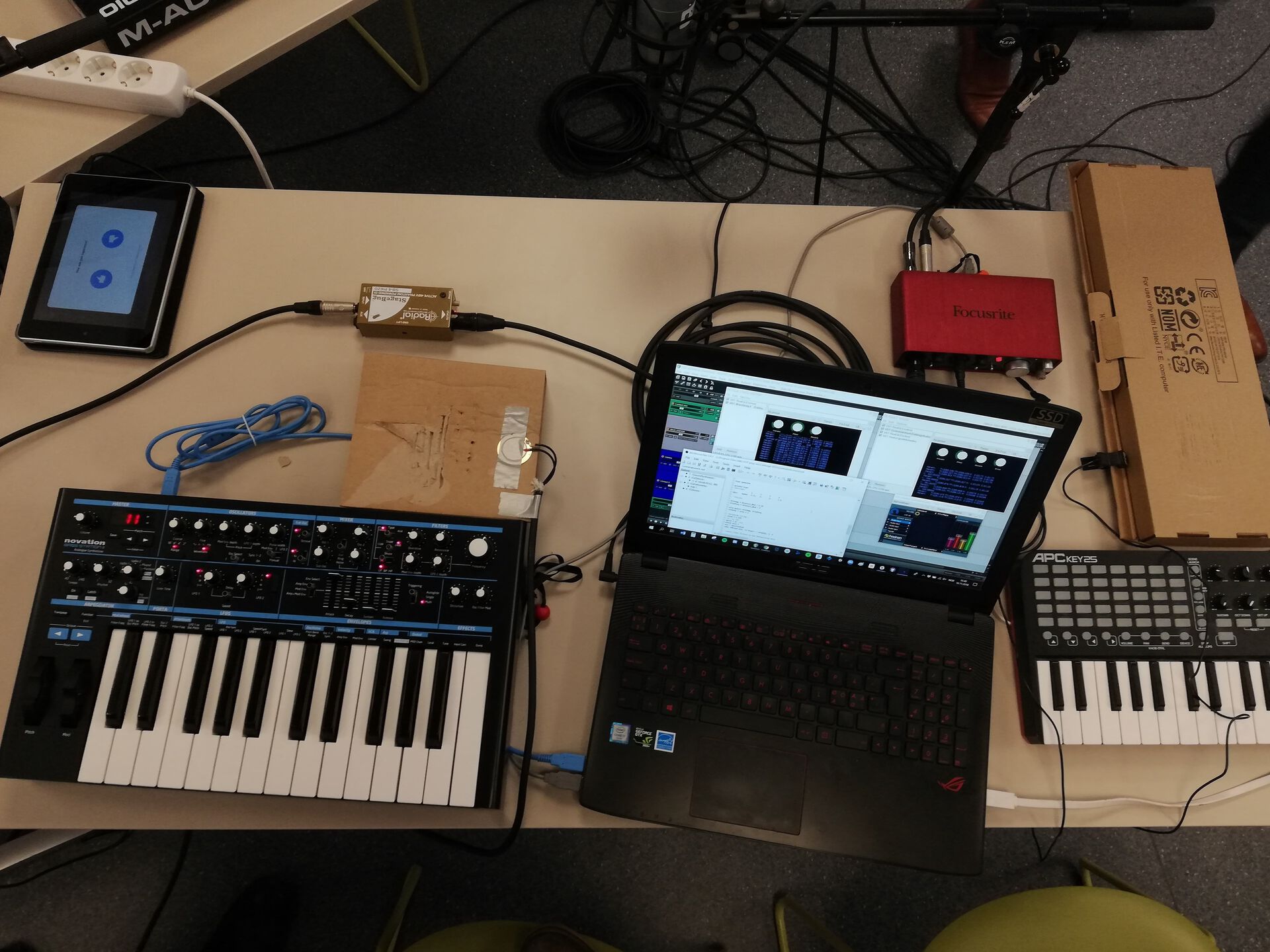
Group C - The Koolboard
The end of the week had come, and the last day of the workshop was here. The final task was to gather everything we had learned and culminate it into an instrument concept. The day was split in two, with the first part of the day being primarily for conceptualization and the last part of the day, dedicated to building our instrument in the mini-hackathon. Up to now, the week had been a mixture of confusion and pleasure in being able to produce and use the technologies we had been introduced to.
-
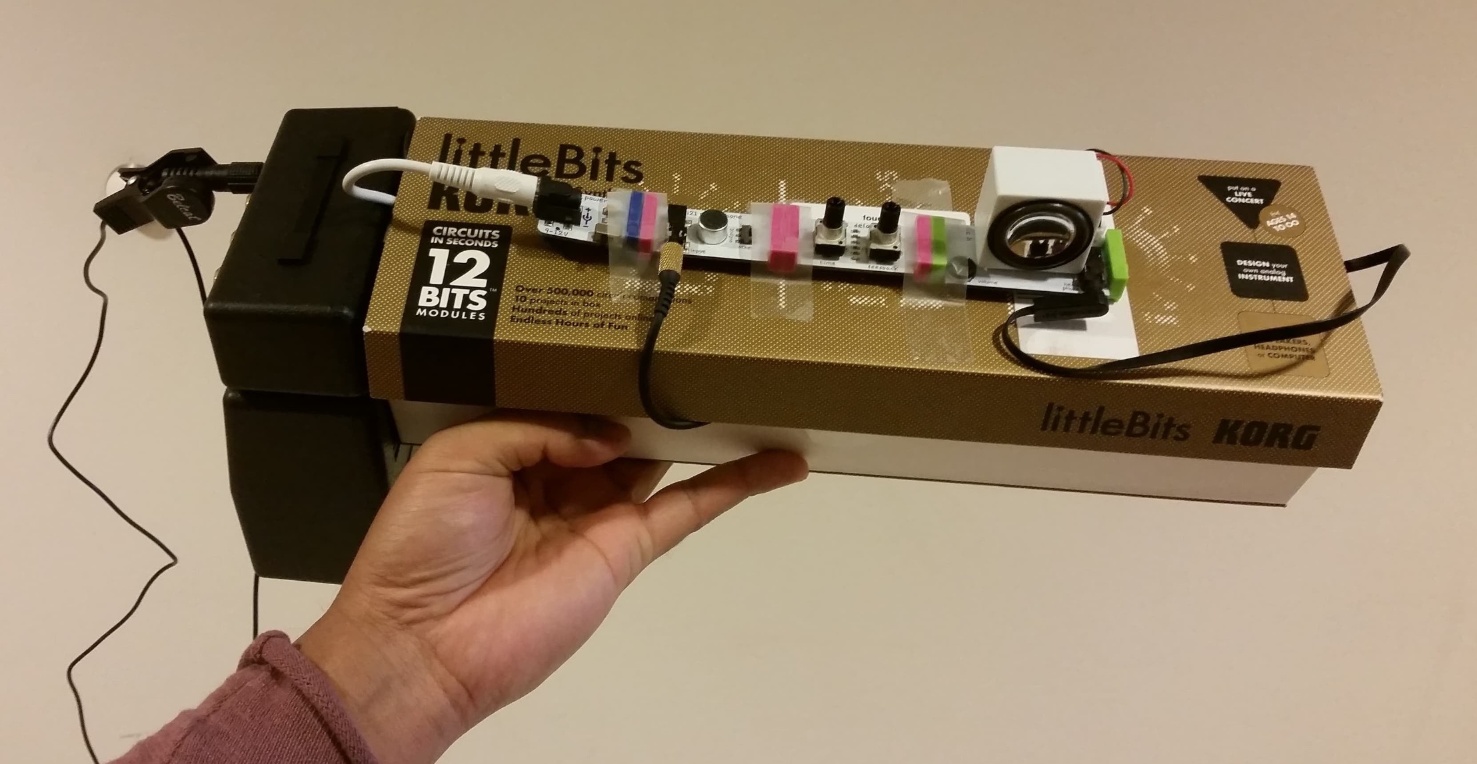
Group B, Making the Percampler
The Final day of the physical computing was based on creating a custom made instrument based on the knowledge and experience gained from the past three days. We had to figure out if we wanted to make one instrument, which could be played across the two campuses, or if we would choose to make two different instruments that could complement each other.
-
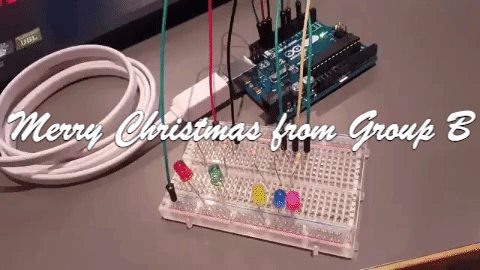
Group B, Christmas already?!
It was a great day today. We played with Arduino kits, made christmas lights and melodies like Twinkle Twinkle Little Star, Super Mario and Imperial March
-

A-team - From Attack of the Code to Revenge of the Synth
Today we first unpacked a Arduino microcontroller each, making circuits and controlling them with the Arduino IDE. We firstly ran a code to make an LED blink, then adjusting to our blinking rate of choice. We then controlled a piezo speaker with a script, programming melody by adjusting pitch and beat for each note.
-
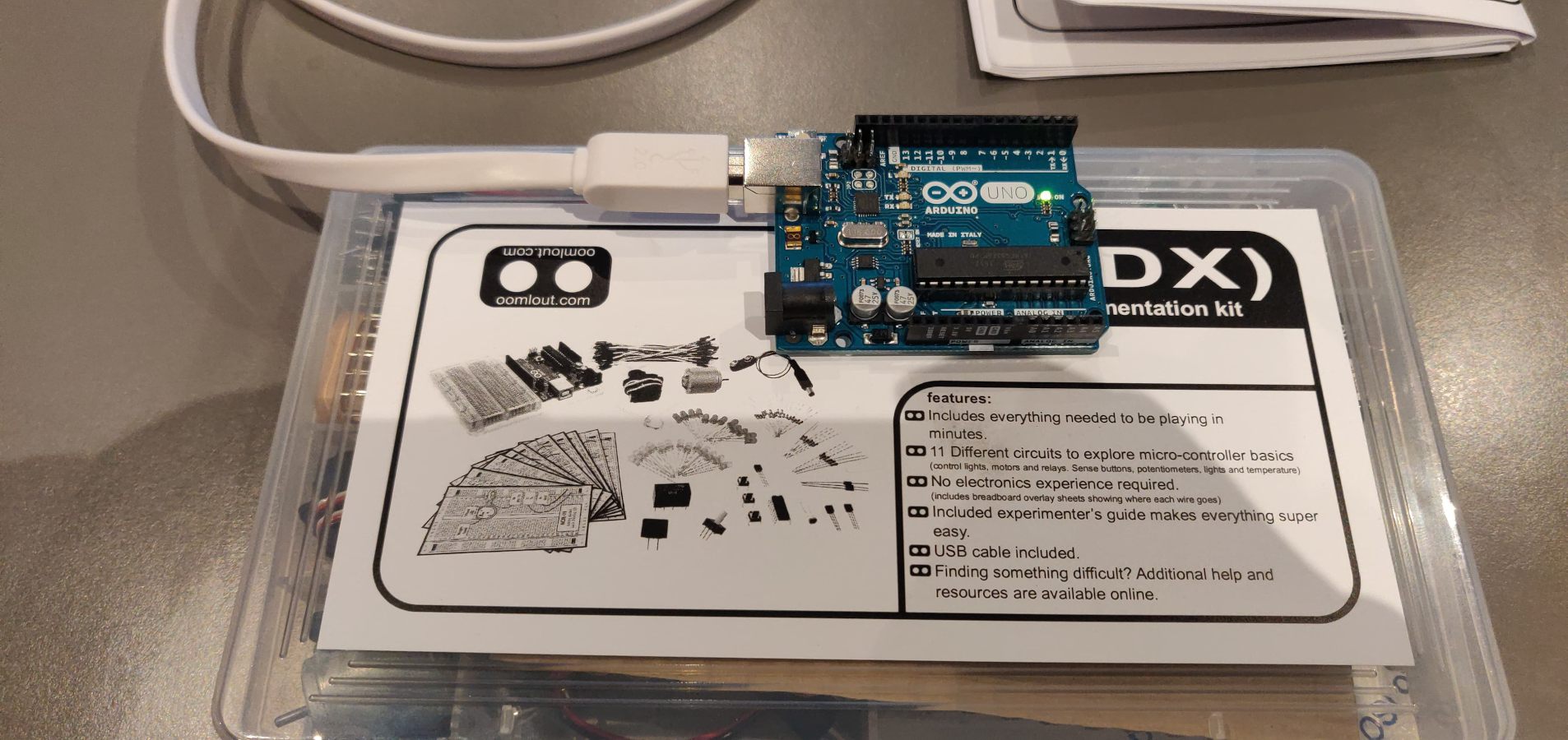
Group C - Thinking outside the box
We started our day with a short preview off the blog posts describing our experiences form the 2nd day. We continued with a short presentation of Anna Xambo’s performance ‘Imaginary Berlin’ at the Web Audio Conference 2018 where audience participation was an integral part of the performance.
-
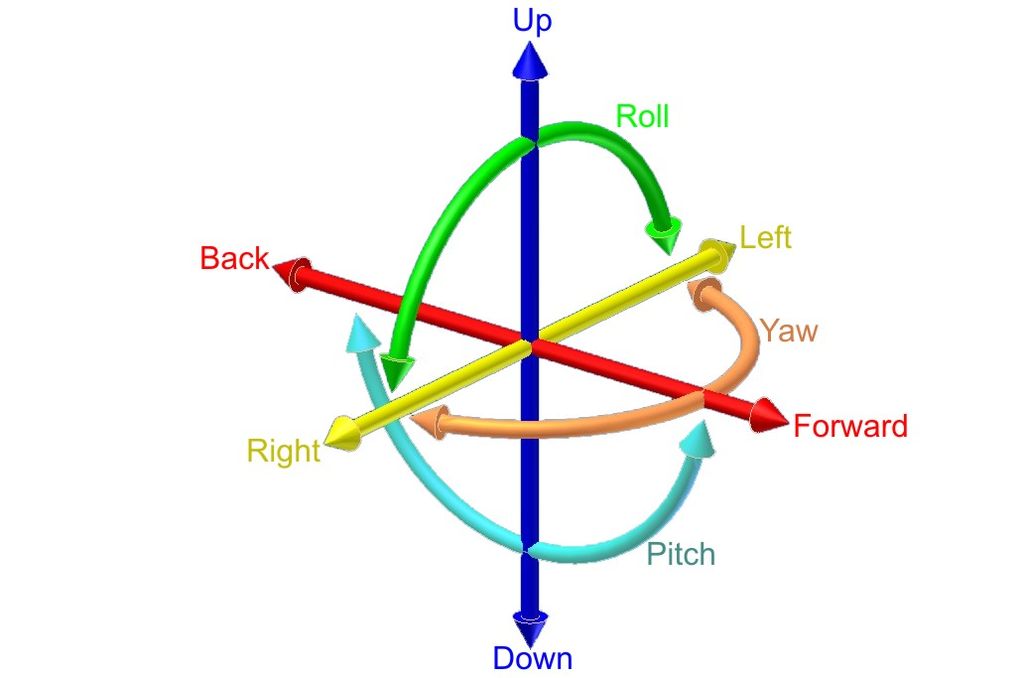
A-team - Phone sensors, servers and javascript
So, day two of coding was pretty much like day one: It startet with total confusion. Confusion then driftet into anxiety followed by panic. Then hysterically laughter and something that could be mistaken for self confidence because what I wrote in the code actually worked. Only difference today was that I thought I was having a hart attack around lunchtime, but it was only low blood sugar and dehydration. Coming home I went for a long run in the woods, looking for a Wolfpack I could join, just to make my life a little easier. Didn't find one so I limped my way back through the woods, trying to summarize the day, but the only word that came to my mind was revenge. Made it home just before dark. Tomorrow is another day. Probably.
-
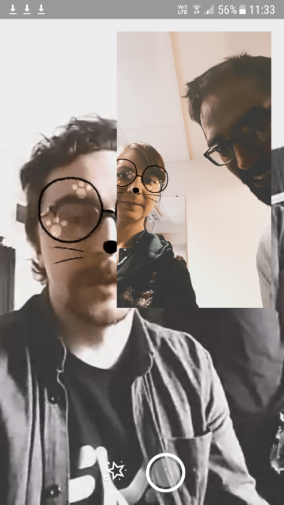
Group B - Day 2 of Physical computing
Today, the session was about creating an audio web application that reacts to inputs of mobile sensor data. First, we tried to identify different types of sensors and their capabilities by trying out different android and iOs sensor apps. Then the application was made based on the movements and orientation of the mobile phone.
-
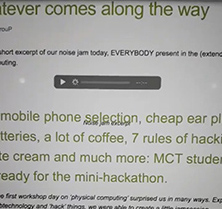
Group C - Developing mobile musical instruments
We can use the sensors in various ways when building a musical instrument on our phones. Sensors can be assigned to different parameters in music like pitch, volume etc. we can also apply several filters to various sensors and affect our instrument’s timber.
-

Group C - Whatever comes along the way
To wrap it up, the first workshop day on 'physical computing' surprised us in many ways. Exposed to new tools in webtechnology we were able to create a little jamsession. Some of the tools were familiar, some of them less. To start with the hardest challenge, around 2 or 3 out of 14 students had hands-on experiences in programming from before.
-
Group B - Circuit sniffing and sampling
During today's workshop, we hunted for sounds created by electromagnetic interferences and vibrations using headphones, contact mics, and portable speakers. Then we 'hacked' a p5.js sampler to play the found sounds from our laptops.
-

A-team - Recording and sampling
Today we recorded sounds using three techniques; Circuit sniffing, earbuds through mini-amplifier, and with a contact mic. We then used some of the sounds we recorded in a sampler, made using web technologies, including javascript with the library P5.js.

